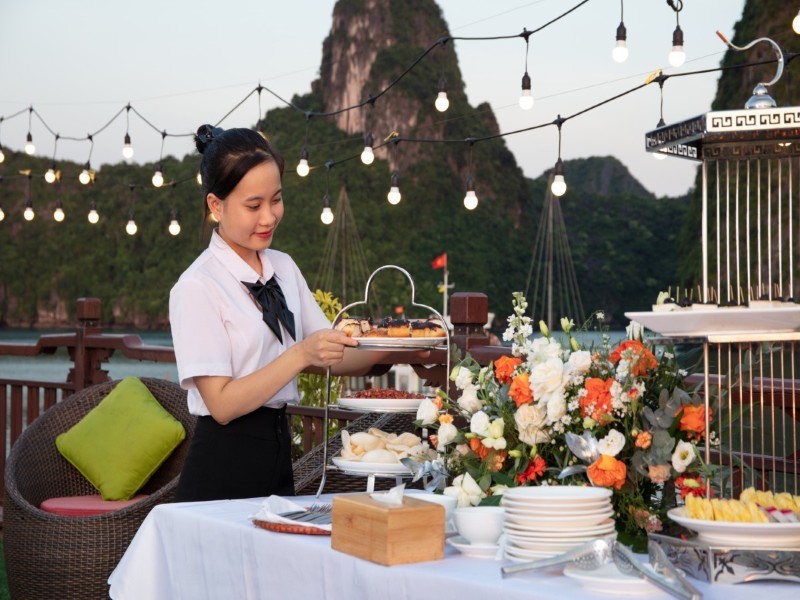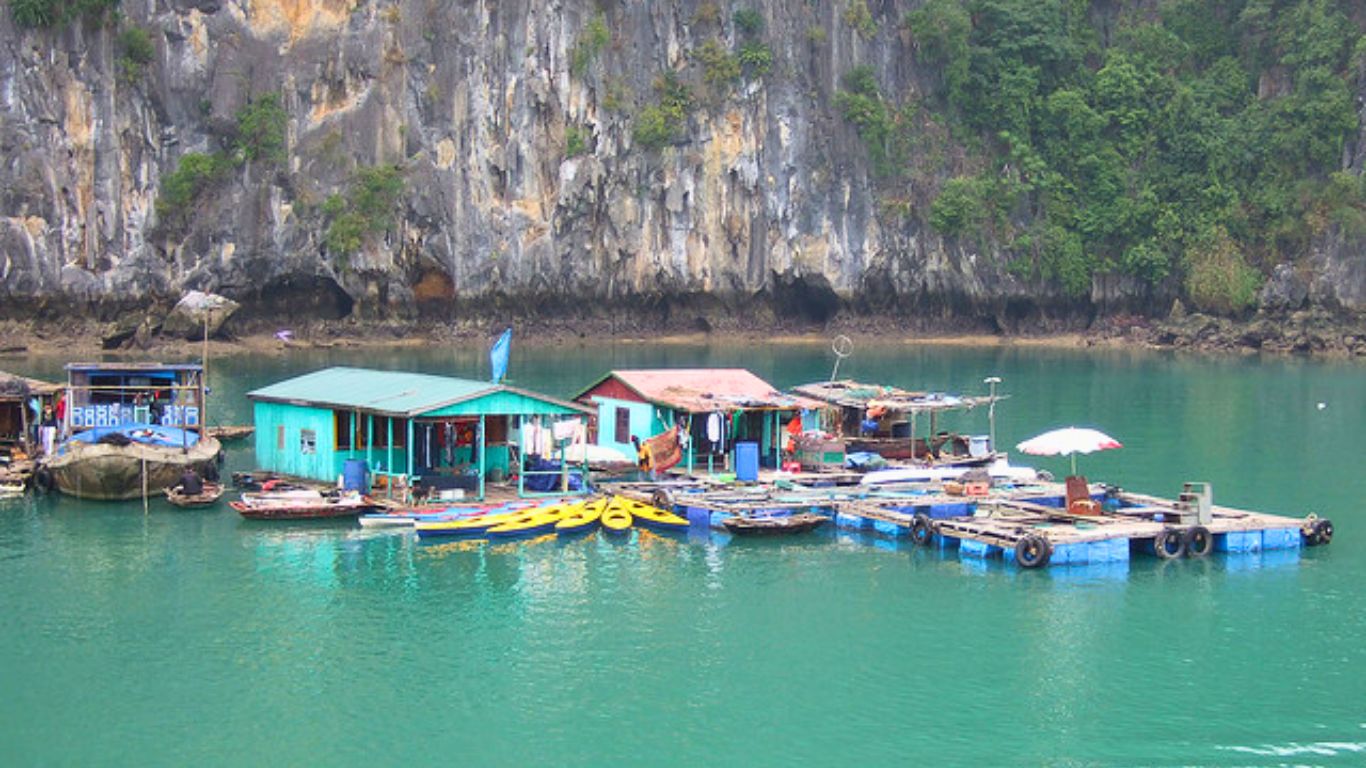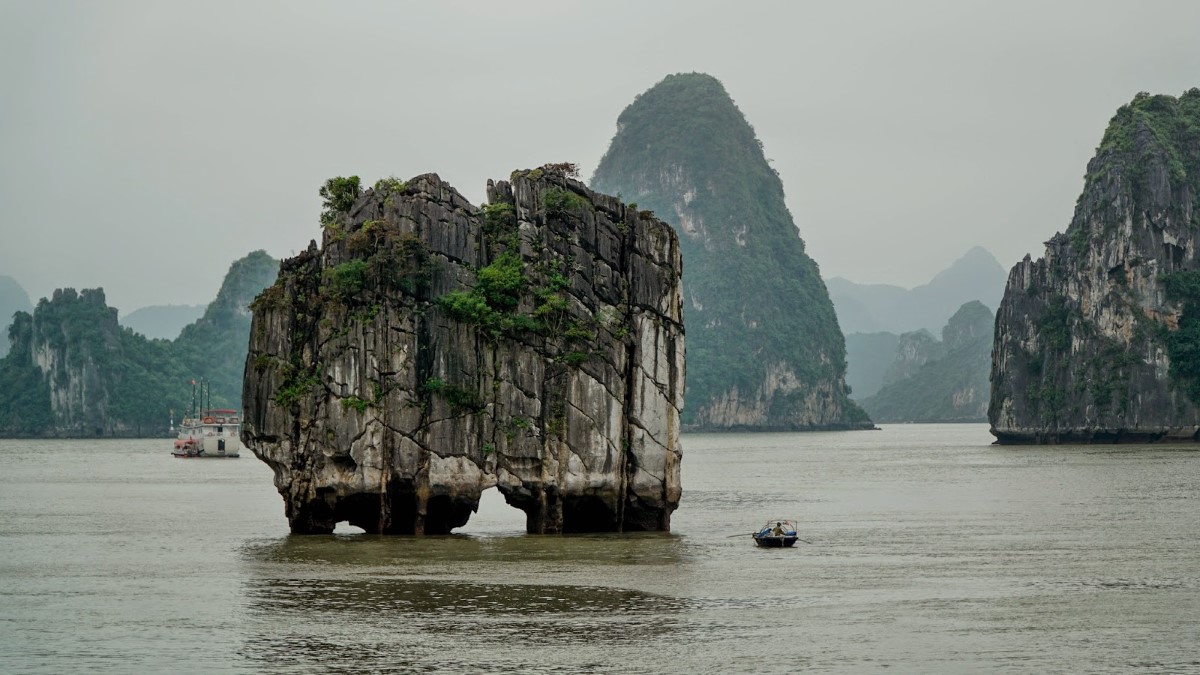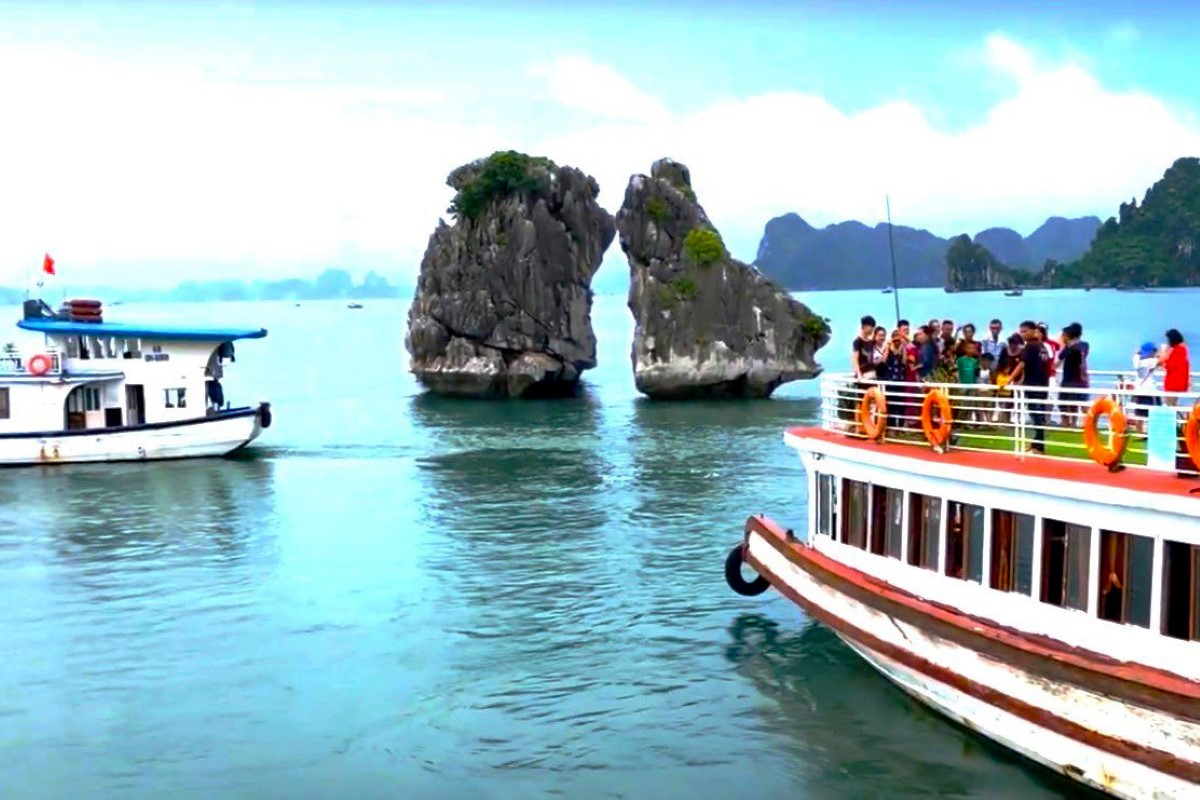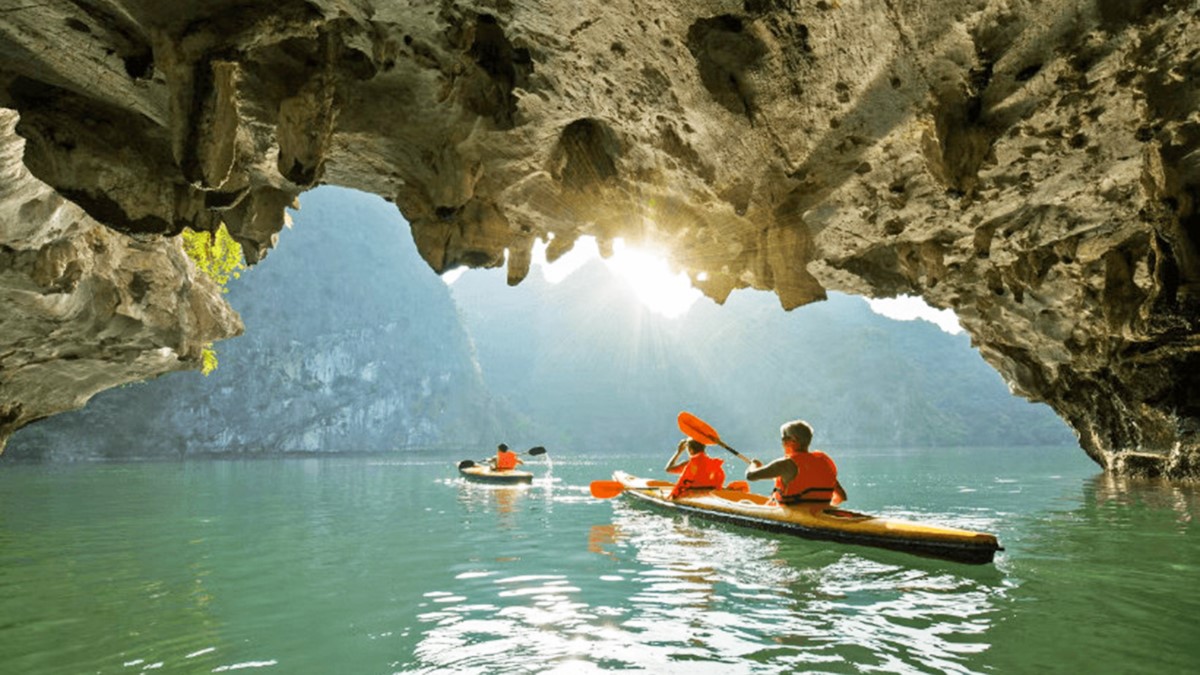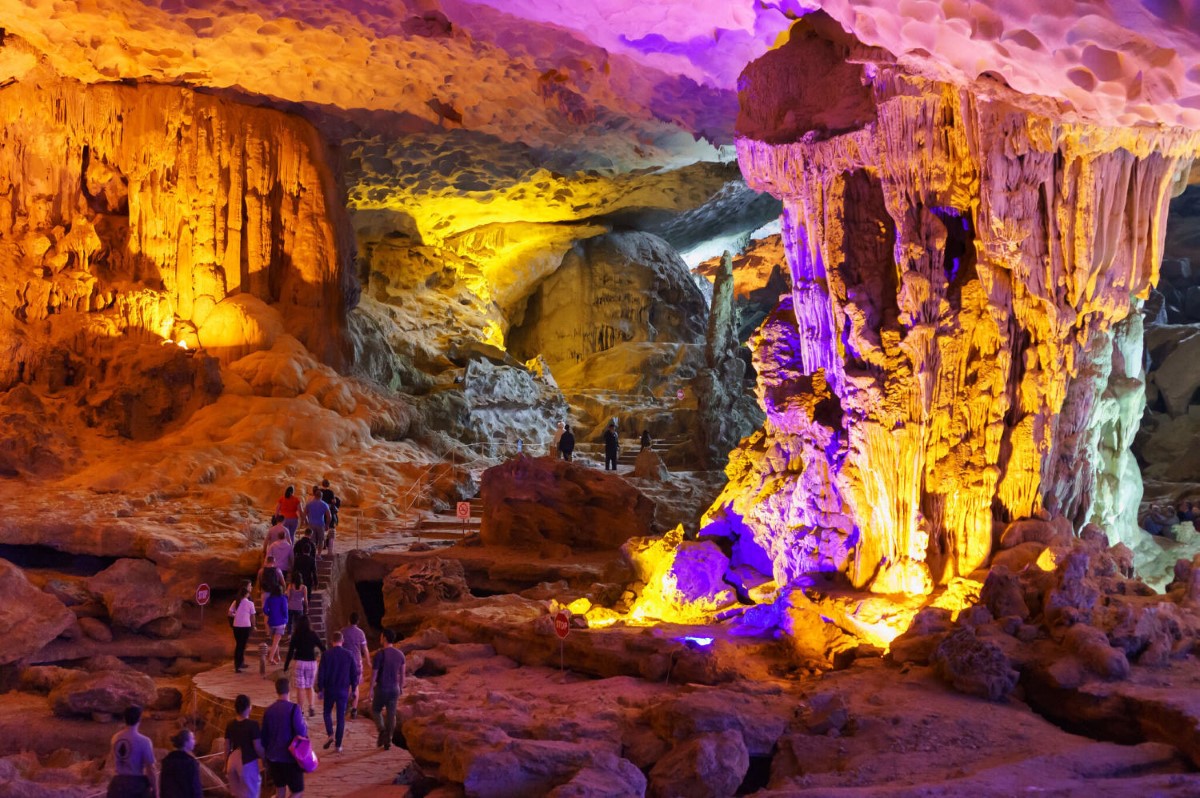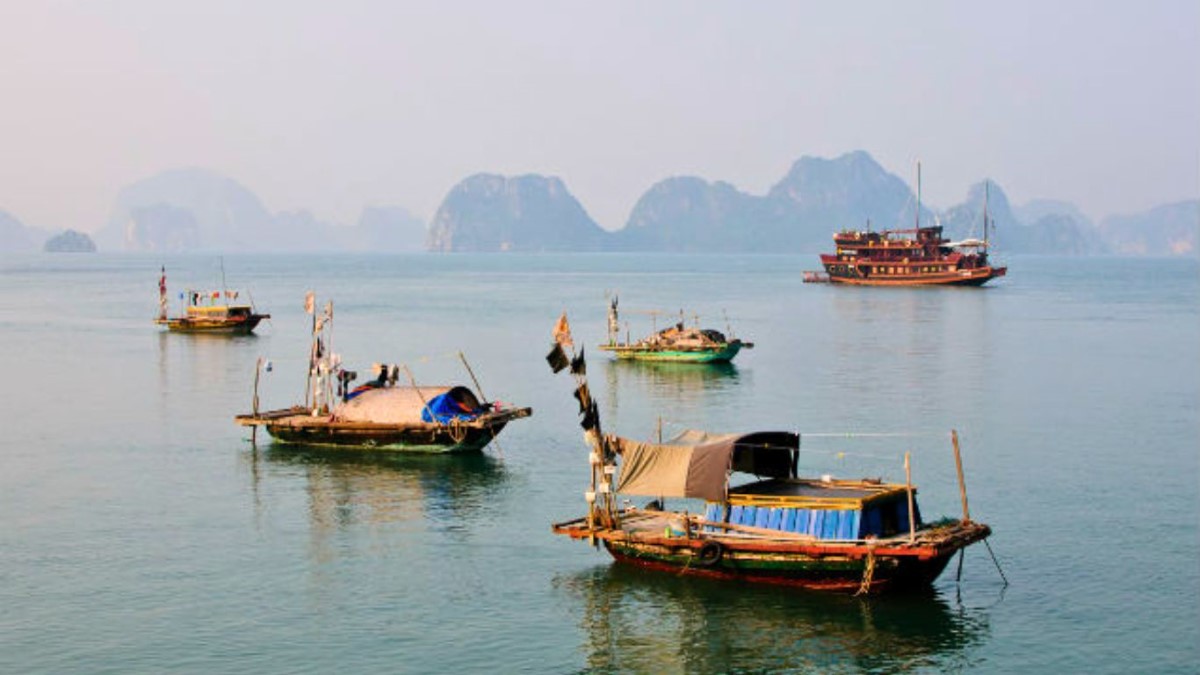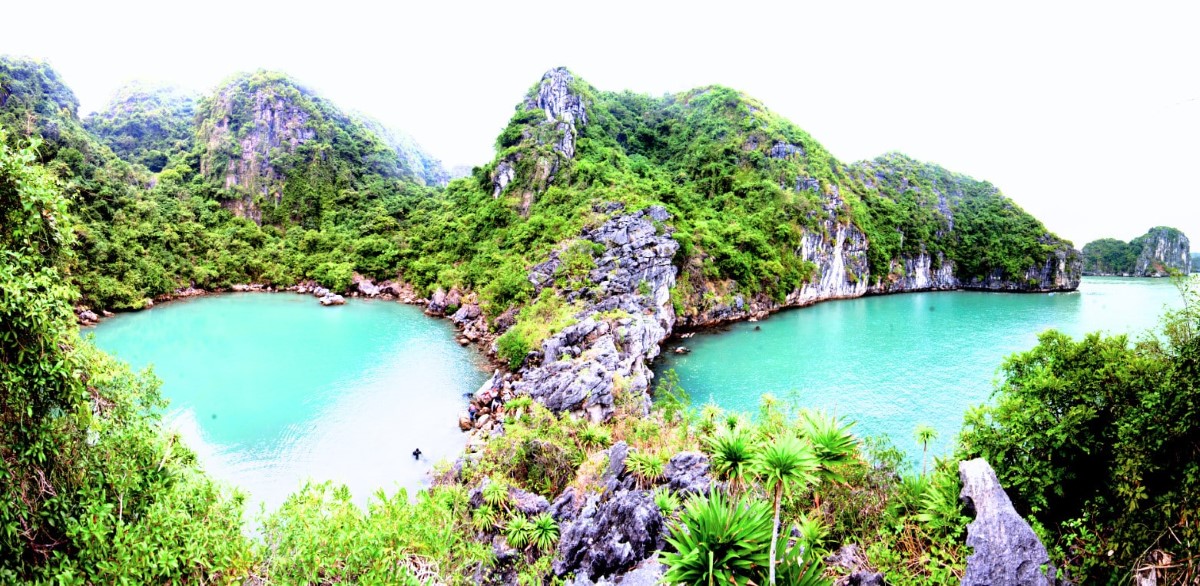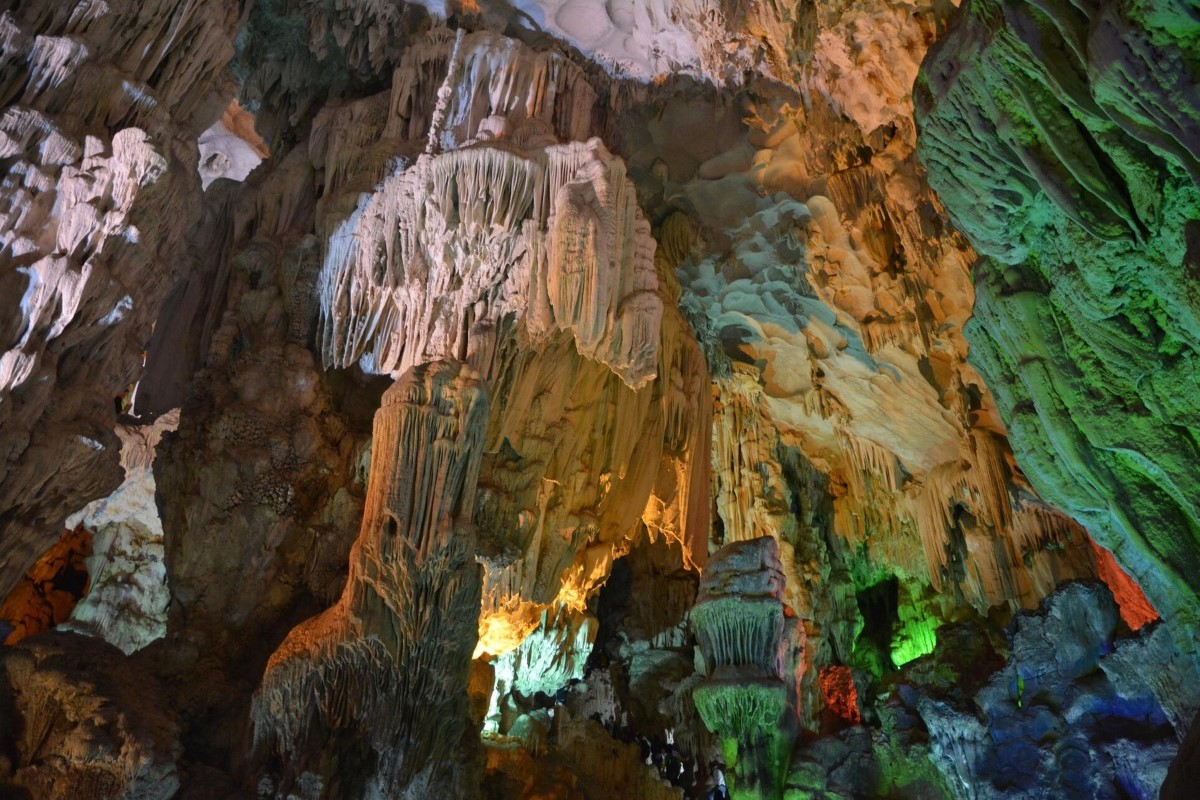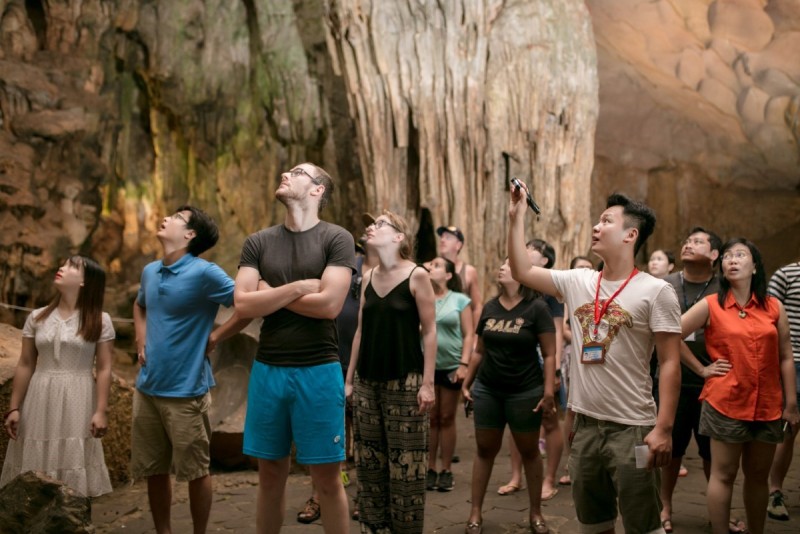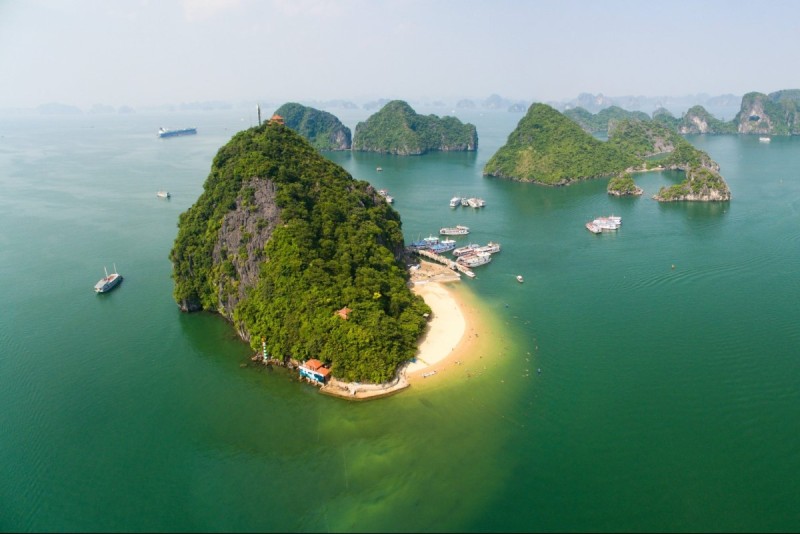Cua Van Floating Village Halong Bay: Complete Travel & Visitor Guide
Cua Van Floating Village is a unique community located in Halong Bay, offering visitors an authentic experience of life on the water. The village features colorful floating houses, traditional fishing practices, and opportunities for boat tours and kayaking, making it a peaceful and culturally rich destination.
At a Glance: Cua Van Floating Village Halong Bay
If you want to experience an authentic Vietnamese floating village life, Cua Van Floating Village offers a unique window into traditional maritime culture. Located within the stunning UNESCO-listed Halong Bay, this largest floating community is known for its vibrant aquaculture and serene natural setting. Here’s a quick snapshot to help you plan your visit.
- Official Name: Cua Van Floating Village (Làng Chài Cửa Vạn)
- Type of Place: Floating village
- Location: Dong Tien Commune, Ha Long City, Quang Ninh Province, Northern Vietnam
- Unique Appeal: It is the largest traditional floating fishing village in Halong Bay, showcasing sustainable aquatic farming and authentic community life on water.
- How to Get There: Accessible only by boat, typically via motorboats or junk boats departing from Tuan Chau Pier or Ha Long City piers; commonly included in Halong Bay cruise itineraries.
- Visit Duration: Approximately 1.5 to 3 hours, depending on your choice of boat tours or homestay experiences.
- Best Time to Visit: October to April, when weather is cooler and drier, offering ideal conditions for boat tours and sightseeing.
- Entry Fee: No separate entrance fee; access costs are usually included in tour or cruise packages ranging from $10 to $30 USD.
- Accessibility: Reachable only by boat; the village’s floating platforms may pose challenges for visitors with mobility impairments.
- Top Activities:
- Guided boat tours exploring the village and surrounding waters
- Kayaking through narrow channels among floating houses
- Nighttime squid fishing experiences
- Staying overnight in authentic floating homestays
- Engaging with local fishermen and learning traditional aquaculture
- Responsible Travel Tip: Respect the local community’s privacy and environment by minimizing noise and waste during your visit.
- Fun Fact: Cua Van Floating Village has over 200 floating houses connected by wooden walkways, creating a vibrant aquatic neighborhood unlike any other in the region.

Discovering Cua Van Floating Village
Imagine stepping into a living museum that floats gently on the calm waters of Halong Bay. Cua Van Floating Village is more than just a scenic spot; it is a vibrant community where generations have lived in harmony with the sea. This unique village offers a rare glimpse into Vietnamese maritime culture, preserved through daily life on the water. As part of the Halong Bay UNESCO heritage, the village stands out as one of the region’s most picturesque floating fishing villages, captivating visitors with its authenticity and charm. When you visit, you’re not just seeing a place — you’re experiencing a way of life shaped by centuries of tradition and natural rhythm.
Explore the colorful mosaic of wooden houses perched on floating platforms, their bright hues reflecting on the gentle waves. Fishing boats drift lazily by, their nets woven by skilled hands, while limestone karsts rise majestically in the distance, framing the village in a dramatic natural landscape. The fresh sea air carries the sounds of daily life — the splash of oars, the chatter of villagers, and the occasional call of seabirds. Here, the water’s subtle rocking is a constant companion, reminding you that this is a living, breathing community, not just a postcard scene.
This is a place where you can witness an authentic Halong Bay experience, far from the usual tourist crowds. The villagers continue their traditions as they have for generations, cultivating seafood, schooling children on boats, and crafting tools and nets essential for their livelihood. Visiting Cua Van Floating Village means immersing yourself in the genuine spirit of Vietnamese floating village culture, where every corner tells a story of resilience, adaptation, and connection with nature.
Plan your visit to Cua Van Floating Village and discover why this remarkable floating community is one of the most treasured and unique attractions in Halong Bay.
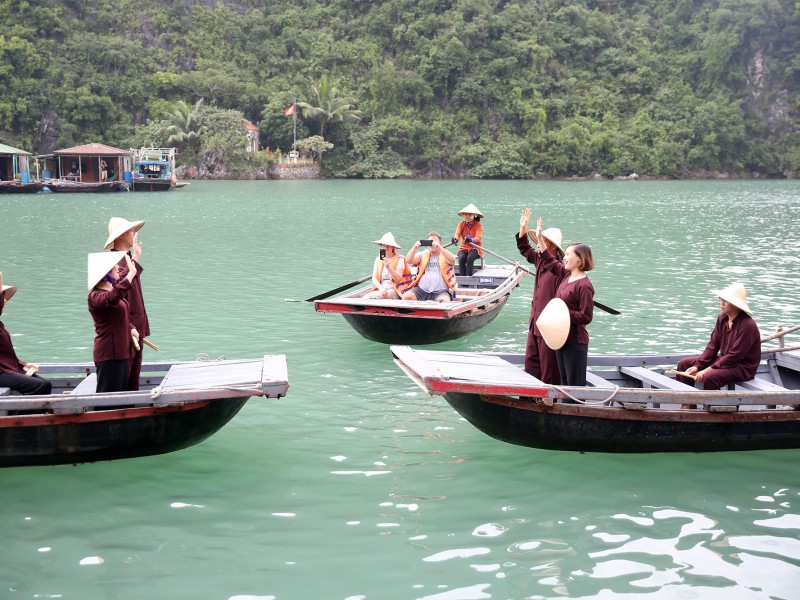
Welcome to Cua Van — What Makes It So Special?
When you arrive at Cua Van Floating Village, you are greeted by a vibrant tapestry of color — houses painted in cheerful reds, blues, and yellows, all balanced delicately on floating platforms. The fishing boats, essential to village life, bob gently in the water, their weathered wood telling stories of many journeys. Surrounding this scene are the towering limestone karsts, their jagged edges softened by the morning mist, creating a breathtaking backdrop unique to Halong Bay.
As you listen closely, you’ll hear the gentle lapping of water against the boats, children’s laughter drifting from floating schools, and the occasional call of local fishermen as they navigate the narrow channels. The air smells faintly of salt and seaweed, fresh and invigorating. This sensory blend is the heartbeat of Cua Van, an authentic village alive with activity and tradition.
Unlike some tourist spots that feel staged, Cua Van remains a living community where daily life continues unabated. Villagers fish, farm, and maintain their homes, providing you with a genuine glimpse into floating village life. This authenticity, combined with stunning natural beauty, makes Cua Van one of the most picturesque floating villages and a must-see for anyone exploring Halong Bay.
Experience the vibrant life and peaceful charm of Cua Van Floating Village and see firsthand why it is celebrated as an authentic Halong Bay experience.
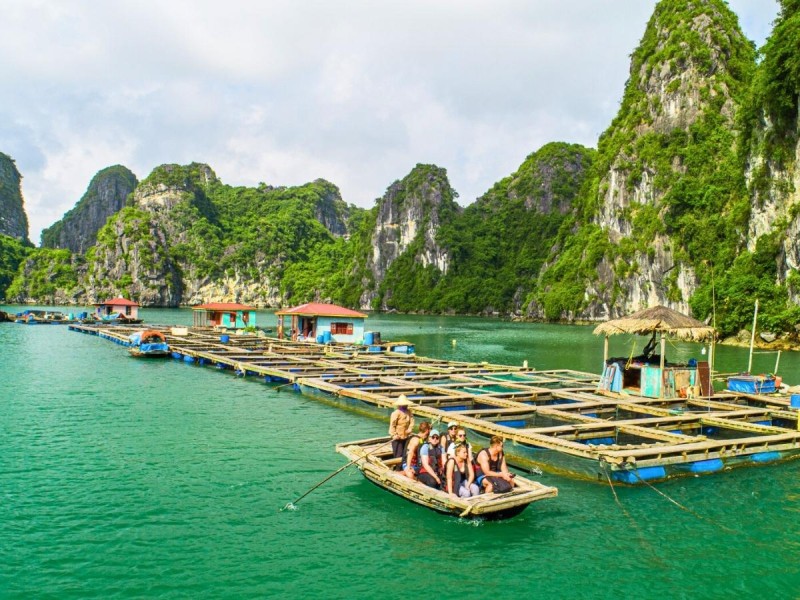
A Peek into the Village’s History and Culture
The story of Cua Van Floating Village begins with a small fishing community that adapted ingeniously to life on the water. Over time, families built floating homes to take advantage of the abundant marine resources surrounding them. This way of living developed out of necessity, shaped by the tides and the natural environment of Halong Bay. The village’s resilient spirit shines through centuries of facing changing weather, economic shifts, and tourism’s growing influence.
Understanding the origins of Cua Van helps you appreciate the deep connection the community has with the sea and their environment. The floating village isn’t just a picturesque setting; it’s a living example of human adaptation and cultural persistence. The traditions here carry on through generations, each one maintaining practices that reflect a profound respect for nature and community life.
By learning about the culture of Halong Bay villages, including the floating village development and evolution, you gain a richer context for your visit. This background transforms a simple sightseeing trip into a meaningful encounter with Vietnam’s maritime heritage.
Take the time to explore Cua Van Floating Village knowing you are witnessing centuries of history and culture still thriving today.
How the Village Came to Life on the Water
The origins of Cua Van Floating Village trace back to a small group of fishermen who chose to build their lives directly on the water. Living afloat allowed easy access to fishing grounds, flexible movement during seasonal changes, and protection from mainland threats. This lifestyle suited the natural ebb and flow of Halong Bay’s tides and provided a sustainable way to harvest the sea’s riches.
Over time, the village expanded as families grew and more residents embraced floating homes. Practical reasons, such as limited land space and the advantages of living on water, kept this community tightly linked to their maritime environment.
Understanding the village’s beginnings offers insight into why floating living remains essential here. It is a remarkable example of human ingenuity shaped by nature’s demands.
Plan your visit with this perspective, appreciating the depth behind the floating village lifestyle.
Traditions and Daily Life You’ll Experience
Daily life in Cua Van Floating Village is a harmonious blend of work and tradition. Fishermen and women set out each day to cast nets and tend to aquaculture farms floating nearby. Children attend school by boat, navigating the waterways with the same ease as their parents navigate the seas. The community comes together for unique festivals and celebrations that honor their connection to the water and their ancestors.
Visitors can observe traditional fishing techniques, enjoy the peaceful rhythm of village life, and perhaps witness ceremonies or local gatherings that showcase cultural pride. These authentic experiences reveal the heart of Cua Van, going beyond the surface to touch the soul of this floating community.
Immerse yourself fully by embracing the traditions and everyday scenes that define life on the water here.
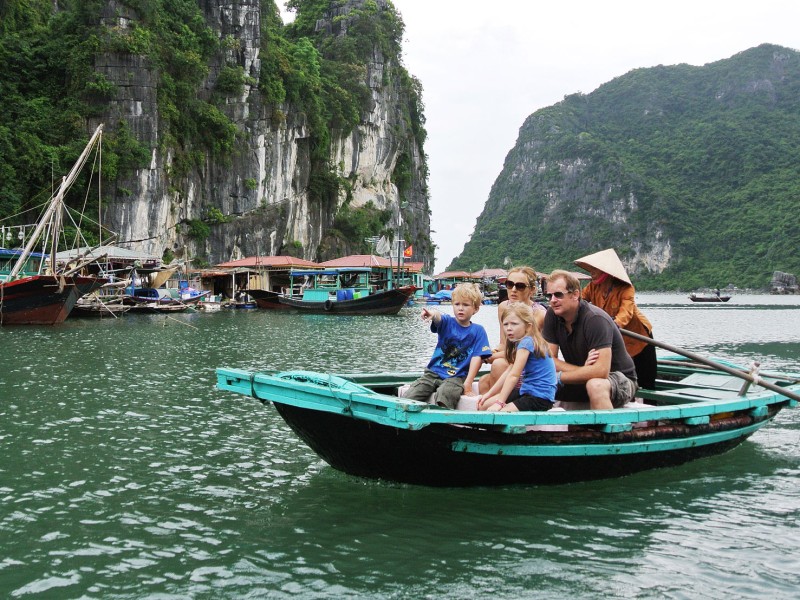
Why Cua Van Stands Out Among Halong Bay’s Floating Villages
Among the many floating villages in Halong Bay, Cua Van Floating Village holds a special place for its unique blend of size, community, and serene beauty. Unlike smaller or more commercialized villages, Cua Van boasts one of the largest and most vibrant floating communities, offering visitors a richer glimpse into daily life on the water. Its well-preserved traditional architecture and colorful houses create a visually stunning setting framed by the iconic limestone karsts.
What truly sets Cua Van apart is its peaceful isolation. While some floating villages draw crowds and busier tourist traffic, Cua Van maintains a quiet, authentic atmosphere. This calmness allows visitors to experience genuine interactions with locals and observe fishing and aquaculture practices without feeling rushed or overwhelmed. The village’s commitment to preserving its cultural heritage adds depth to every visit.
Choosing Cua Van Floating Village means immersing yourself in an authentic, tranquil, and captivating part of Halong Bay — a perfect destination for travelers seeking both natural beauty and cultural richness.
Plan your visit to Cua Van Floating Village for a truly memorable floating village experience that stands apart from the rest.

Getting to Know the Locals and Their Way of Life
When you visit Cua Van Floating Village, one of the most rewarding experiences is connecting with the people who call this unique place home. The community lives in harmony with the water, guided by values of resilience, cooperation, and respect for nature. Observing daily life with care and mindfulness lets you appreciate the deep bond between the villagers and their environment.
Interacting respectfully means approaching with curiosity but also humility. Simple gestures, like asking permission before taking photos or learning a few Vietnamese phrases, go a long way in building genuine connections. Understanding the floating community life helps you see beyond the surface, revealing a culture that has thrived for generations through adaptability and shared traditions.
Spend time in Cua Van with an open heart and mind, and you’ll leave with a richer appreciation of this living heritage.
Meet the Fisherfolk: Daily Routines and Traditional Skills
A typical day in Cua Van Floating Village starts early, as fishermen prepare their boats and nets for the day’s catch. Many of the fishing techniques you’ll witness have been passed down through generations, combining skill, patience, and deep knowledge of the sea’s rhythms. Techniques include casting large nets, hand-line fishing, and sustainable aquaculture practices designed to protect the local ecosystem.
Visitors have the unique chance to observe or even participate in these traditional activities, gaining insight into a way of life that is closely tied to nature’s cycles. These experiences offer an authentic glimpse into the hard work and craftsmanship that sustain the community.
By learning about Cua Van fishing techniques and traditional Halong Bay fishing, you deepen your connection to the village’s heritage and the daily lives of its people.
Life's Rhythm: From School Boats to Floating Markets
Life in Cua Van Floating Village flows with the steady rhythm of the water that surrounds it. Children travel to school by boat, navigating narrow waterways with practiced ease, turning daily commutes into a unique adventure. These floating schoolboats are not just transportation—they represent the community’s commitment to education despite geographic challenges.
Markets here are equally fascinating, where vendors sell fresh seafood, local produce, and handmade goods directly from their boats. The floating markets serve as lively hubs for social interaction and trade, showcasing the villagers’ resourcefulness and deep connection to their environment. Community gatherings often revolve around these markets, strengthening bonds and preserving traditions.
Witnessing these vibrant daily activities offers you a complete view of Cua Van’s social fabric and the ingenious ways the villagers live in harmony with their aquatic surroundings.
Plan to spend time exploring the floating markets and observing school boats to fully appreciate the village’s rich cultural life.
An Binh's Morning Catch: A Lesson in Traditional Fishing
Most Halong Bay tours whisk you past the floating villages, offering only a fleeting glimpse, but my morning in Cua Van was different. This wasn't about simply observing; it was about stepping into the rhythm of a life lived entirely on water, learning a craft passed down through generations. I was about to get my hands wet, truly immersing myself in the daily grind of a Cua Van fisherman.
The air, even before dawn, was thick with the scent of salt and damp wood. A gentle rocking beneath my borrowed sampan was my alarm clock, replacing the blare of city sirens. My guide, a soft-spoken man named Mr. Hai, smiled, gesturing towards his small, weathered fishing boat. The sky was just beginning to blush with orange and purple, casting a serene glow over the limestone karsts that loomed like ancient guardians around us. I felt a mix of nervous excitement and deep curiosity; this was a side of Vietnam I'd longed to truly connect with.
Our first task was checking the nets set the previous evening. The process unfolded with a quiet efficiency that spoke of countless repetitions. Mr. Hai's calloused hands moved with practiced ease as he hauled in a section of net. The splash and drip of water as the netting emerged was the only sound for a moment, then came the soft thud of fish – small, shimmering silver bodies – hitting the bottom of the boat. I leaned in, fascinated, as he deftly untangled them, his fingers moving faster than my eyes could follow. He then handed me a section of net, its mesh cool and slightly slimy from the sea. "Try," he encouraged, his eyes twinkling. My initial attempts were clumsy, tangling the lines more than untangling the fish. He patiently guided my fingers, showing me how to gently release the catch without damaging the net or the fish. I focused on the intricate knots, the precise movements, feeling the fine, strong threads against my skin. It was humbling to see how much skill was involved in something that looked so simple.
Then came the net mending. A crucial part of a fisherman's day, Mr. Hai explained, ensuring the nets remained efficient. He demonstrated a specific knot, swift and sure. "This one is important," he said, "a small hole means many lost fish." My fingers fumbled with the twine, attempting to replicate his fluid motion. I tried, and tried again, the rough twine chafing my fingertips slightly. It was frustrating at first, realizing how much dexterity and muscle memory this seemingly simple act required. But with each attempt, I felt a deeper appreciation for the relentless effort that goes into putting food on the table here. The sun was now fully up, warming my back, and the sounds of the village slowly awoke around us – a distant child's laugh, the gentle lap of water against boat hulls, the faint aroma of cooking rice drifting from a nearby home. It was a profound lesson in patience and persistence, witnessing firsthand the dedication ingrained in their daily lives. My hands might have been clumsy, but my spirit was completely engaged.
This morning was more than just a fishing trip; it was a window into a resilient way of life. I left Cua Van not just with photographs, but with the quiet satisfaction of having truly participated, even in a small way, in its enduring traditions.
Actionable Practical Takeaways from My Morning Catch:
- Go Early for Authenticity: Aim for a sunrise visit or an early morning activity. This is when the village is most active with daily chores like fishing, before the main tourist boats arrive.
- Embrace the Simplicity: Don't expect luxurious facilities. Pack light, wear comfortable clothes you don't mind getting a little wet, and be open to a rustic experience.
- Engage Respectfully: Ask your guide to facilitate interactions with locals. A simple smile or a "Cảm ơn" (thank you) goes a long way. If you want to take photos of people, always ask permission first.
- Support Local: If given the opportunity, consider buying a small, handmade item from a local artisan or perhaps some fresh seafood if your homestay allows cooking.
- Patience is Key: Whether it's trying your hand at a craft or simply observing, allow yourself to slow down and absorb the rhythm of the village. Don't rush.
Recommendation: If you seek a truly authentic and deeply human experience in Halong Bay, beyond just the stunning scenery, then a morning spent engaging with the fisherfolk of Cua Van is an absolute must. It’s an unforgettable opportunity to connect with a unique way of life and gain a profound appreciation for the heart of this incredible floating community.
Chloe's Discovery: The Floating Classroom
You hear about floating villages, and your mind conjures images of houses on water, maybe some fishing boats. But what truly sets Cua Van apart, and what genuinely surprised me, was the vibrant, self-sufficient ecosystem of daily life that unfolded beyond just fishing, particularly the ingenuity of how an entire community thrives without solid ground beneath their feet. My morning exploration with Mr. Linh, a Cua Van resident and my wonderful guide, unveiled a side of the village that truly captured my heart: its unwavering rhythm of community, learning, and trade.
The sun had climbed higher, casting diamond-like glints across the calm emerald waters. We were navigating through a cluster of homes, and I was admiring a particularly bright string of dried fish hanging outside a window, when a faint, rhythmic chanting drifted across the water. It wasn't religious; it was the cadence of children reciting lessons. "School boat," Mr. Linh whispered, pointing to a modest wooden boat, larger than the others, with a makeshift blackboard inside and a dozen or so children, some no older than five, sitting on small stools, their faces alight with concentration. My initial feeling was one of profound awe – this wasn't just a place where people lived, but where they learned, grew, and built futures, all while gently swaying on the bay. It felt incredibly special, a secret world unfolding before my eyes.
Later, as we continued, the quiet hum of the village shifted into a livelier clatter and chatter. Rounding a bend between two larger floating homes, we entered what Mr. Linh called the "floating market" – though it was less a market square and more a series of daily exchanges. A woman in a conical hat expertly paddled her small sampan, laden with vibrant green vegetables and fresh fruit, pulling up alongside another boat whose occupants were bartering for their day's groceries. I watched, mesmerized, as goods were passed from boat to boat, often with a cheerful laugh or a quick, friendly word. The crisp smell of fresh produce mingled with the ever-present salty tang of the sea. There was no rush, no jostling crowds; just a calm, respectful exchange. Another boat, filled with colorful fabrics, drifted by, and the sound of a small, sputtering engine signaled the arrival of the "ice delivery" – a crucial event in the tropical heat. Each interaction, each passing boat laden with goods, was a testament to the villagers' incredible resourcefulness. They had built not just homes, but a fully functioning society, adapting every aspect of life to the water. I felt a deep sense of admiration for their resilience and their ability to create such a cohesive community in what many would consider an unconventional environment.
My most vivid insight was the seamless integration of daily life with the natural environment. The entire village operated like a well-oiled machine, each boat, each family, playing a part in the larger community. It’s not just a collection of houses; it's a living, breathing testament to human adaptability and the power of collective spirit.
Actionable Practical Takeaways from Chloe's Discovery:
- Observe Quietly: The beauty of Cua Van's daily life is in its natural flow. When you encounter school boats or market exchanges, observe from a respectful distance to avoid disrupting their routines.
- Support Local Exchange: If given the opportunity (often on homestay visits or specific community tours), purchase small items directly from villagers. This supports their unique economy.
- Ask Your Guide: Your local guide is your best bridge to understanding these nuances. Ask them about specific traditions, how resources are managed, or how children attend school. Their insights are invaluable.
- Look Beyond the Obvious: While the scenery is stunning, make an effort to notice the smaller details of daily life – a fishing net being mended, a meal being prepared, clothes drying in the sun. These paint the fuller picture.
- Embrace the Water Transport: Understand that all movement is by boat. Pack essentials in a waterproof bag, and be prepared for gentle rocking.
Recommendation: For anyone visiting Halong Bay who yearns for more than just a scenic cruise, I wholeheartedly recommend seeking out an immersive experience in Cua Van. Witnessing the ingenuity of the floating classroom and the charming simplicity of the water-borne market will undoubtedly leave you, like me, with a profound appreciation for this extraordinary community and its enduring way of life.
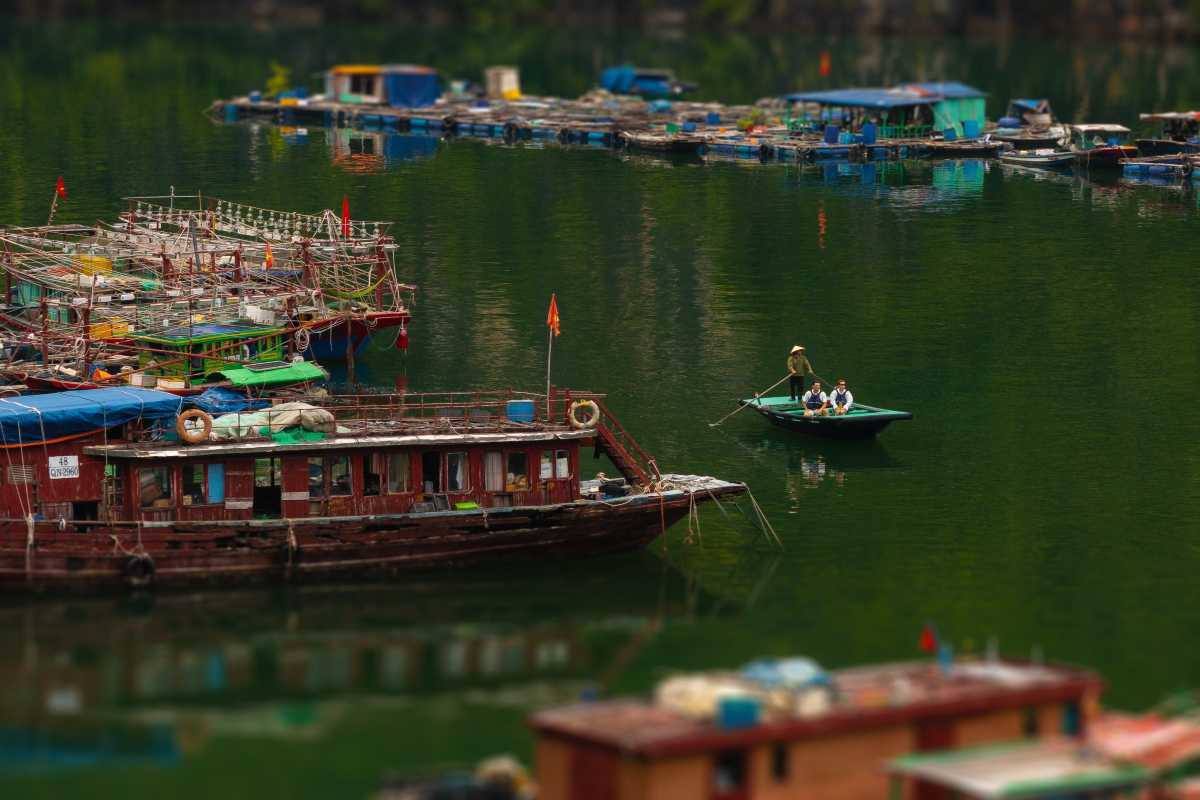
What You Can Expect When You Visit
When you arrive at Cua Van Floating Village, prepare to experience a peaceful and rustic environment that feels far removed from busy tourist spots. The village offers basic facilities that reflect its traditional way of life rather than modern luxury. Expect simple floating homes, local shops, and limited amenities, all set against the breathtaking natural beauty of Halong Bay.
The atmosphere here is calm and authentic, allowing you to immerse yourself in the daily rhythms of a vibrant fishing community. While the comforts may be modest, the cultural richness and serene surroundings more than make up for it. This authenticity is what draws visitors seeking genuine experiences.
Knowing what to expect at Cua Van helps you plan appropriately and ensures your visit is comfortable and rewarding.
Take your time to enjoy the tranquil beauty and genuine local life that defines the Cua Van visitor experience.
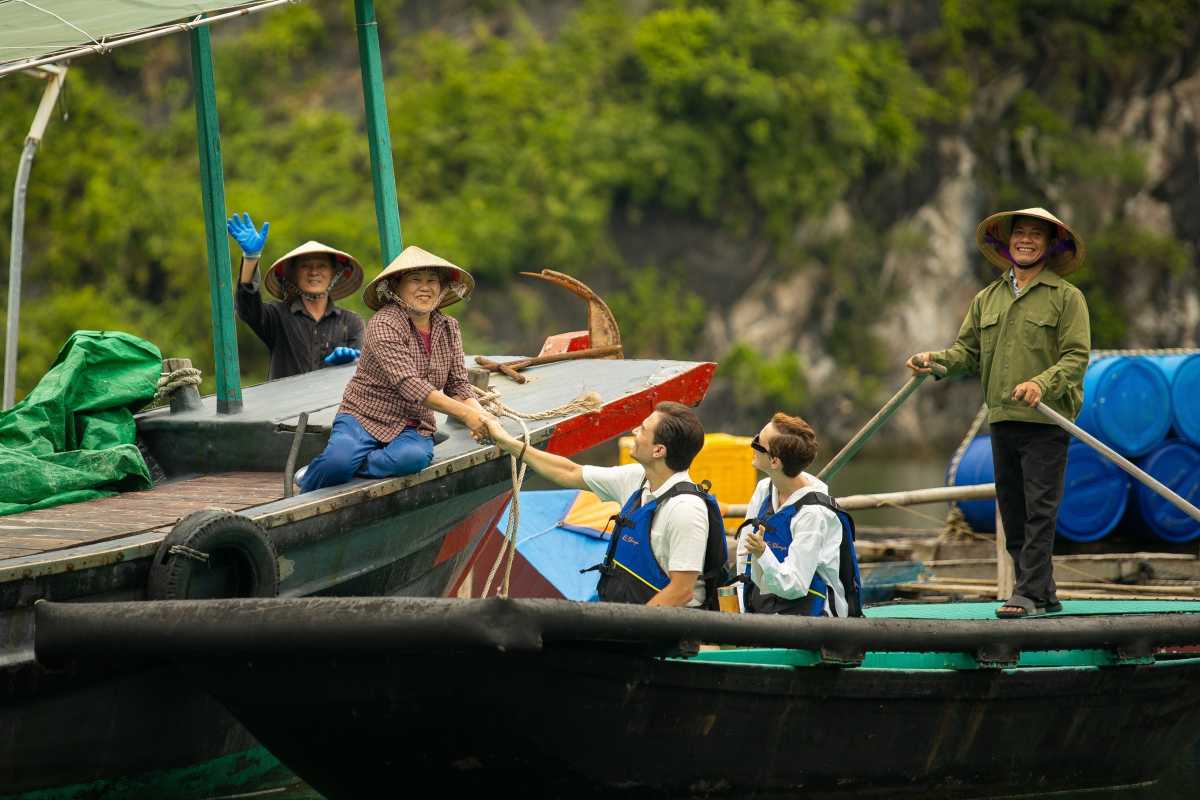
Planning Your Visit to Cua Van
Planning a trip to Cua Van involves a few important steps to ensure a smooth and enjoyable experience. From understanding how to reach the village to knowing when to go and what to bring, this guide offers clear, practical advice. With a bit of preparation, you can focus on soaking in the stunning views and authentic culture of this floating community in Halong Bay.
Consider the best travel routes, seasonal weather patterns, and cost expectations as you arrange your visit. By following these tips, you’ll be ready to explore Cua Van with confidence and ease.
Make your travel plans well in advance to secure the best tours and accommodations for an unforgettable trip to Cua Van Floating Village.
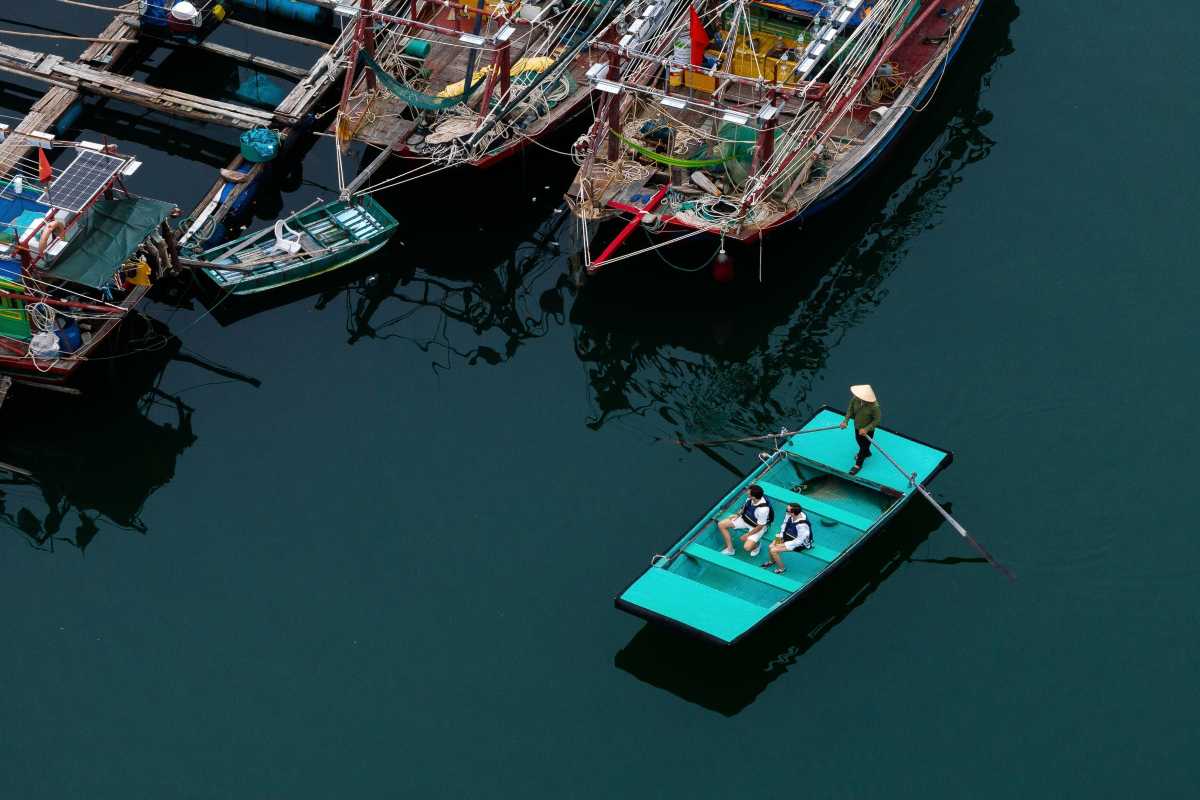
How to Get There — Your Travel Options Made Easy
Getting to Cua Van Floating Village starts with reaching Halong City or the popular Tuan Chau Pier, both accessible from Hanoi. From these hubs, you can choose from a variety of boats, including traditional junk boats and faster motorboats, each offering a different way to experience the scenic waters.
Many organized boat tours include Cua Van as a highlight, combining it with stops at nearby caves and islands. Whether you prefer a group tour for convenience or a private transfer for flexibility, options are plentiful.
Understanding your transport choices helps you plan the best route to enjoy the breathtaking surroundings of Halong Bay.
Explore boat options and departure points carefully to pick the best way to reach Cua Van for your trip.
Boat Routes from Halong City and Tuan Chau Pier
From Halong City, boats depart regularly toward Cua Van, with travel times typically ranging from 30 to 60 minutes depending on boat type. The journey offers stunning views of limestone karsts and tranquil waters. Tuan Chau Pier, a popular departure point for many cruises, also provides routes that include Cua Van as a scheduled stop.
Most tourist boats are either traditional wooden junks or modern motorboats. Junk boats offer a leisurely pace and classic aesthetic, while motorboats get you there faster but with less time for sightseeing en route.
If you prefer self-guided travel, knowing these routes and schedules will help you book the ideal boat for your itinerary.
Check local tour schedules and boat types at Halong City and Tuan Chau Pier to plan your perfect arrival to Cua Van.
Tips for Booking Tours or Private Transfers
Choosing the right tour or transfer is key to a hassle-free visit to Cua Van. Reputable operators often offer group tours with set itineraries and amenities, which are great for first-time visitors or those on a budget. Private transfers provide a more personalized experience, allowing flexible timing and exclusive access.
Before booking, ask about the boat type, included activities, meals, and cancellation policies. Reading recent reviews and comparing prices helps ensure you get good value.
Booking through trusted agencies or platforms, like Asia Travel Links, can provide extra peace of mind with verified service providers and travel support.
Carefully selecting your tour or transfer lets you focus on enjoying the authentic beauty and culture of Cua Van Floating Village.
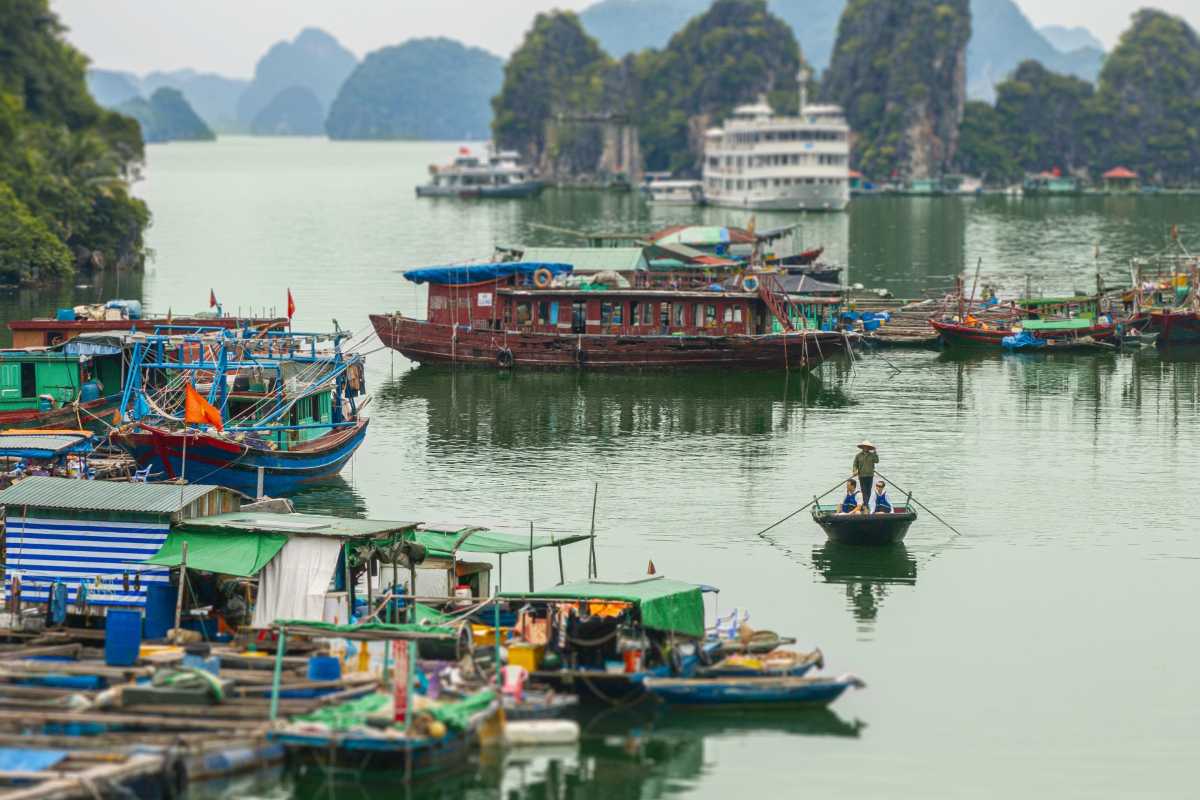
When’s the Best Time to Visit for Great Weather and Experiences?
The best time to visit Cua Van Floating Village aligns closely with the weather patterns of Halong Bay. The dry season, from October to April, offers calm waters, clear skies, and comfortable temperatures ideal for boating, kayaking, and exploring the village. During these months, you’ll enjoy peaceful sailing conditions and vibrant scenery.
Avoid the monsoon season, which typically runs from May to September. Heavy rains and occasional storms can disrupt travel plans and limit outdoor activities. Additionally, the peak tourist months are December and January, when crowds can be larger and prices higher. For a quieter experience, consider visiting in the shoulder months of October, November, or April.
Planning your trip around these weather and crowd patterns helps you make the most of your visit to Cua Van.

What to Pack for Your Adventure on the Water
Packing wisely for your trip to Cua Van Floating Village is essential to ensure comfort and respect for the local culture. Include sun protection items like sunscreen and a wide-brimmed hat to guard against strong sunlight on the water. Comfortable shoes suitable for walking on wet or uneven surfaces are a must, alongside a swimsuit for water activities like kayaking.
Waterproof bags protect your belongings from splashes, while insect repellent helps keep mosquitoes at bay, especially during evenings. Don’t forget your camera to capture the stunning views and vibrant village life. When visiting local homes or community spaces, modest clothing shows respect for traditions and customs.
Prepare this packing list to enjoy your adventure fully and comfortably at Cua Van.
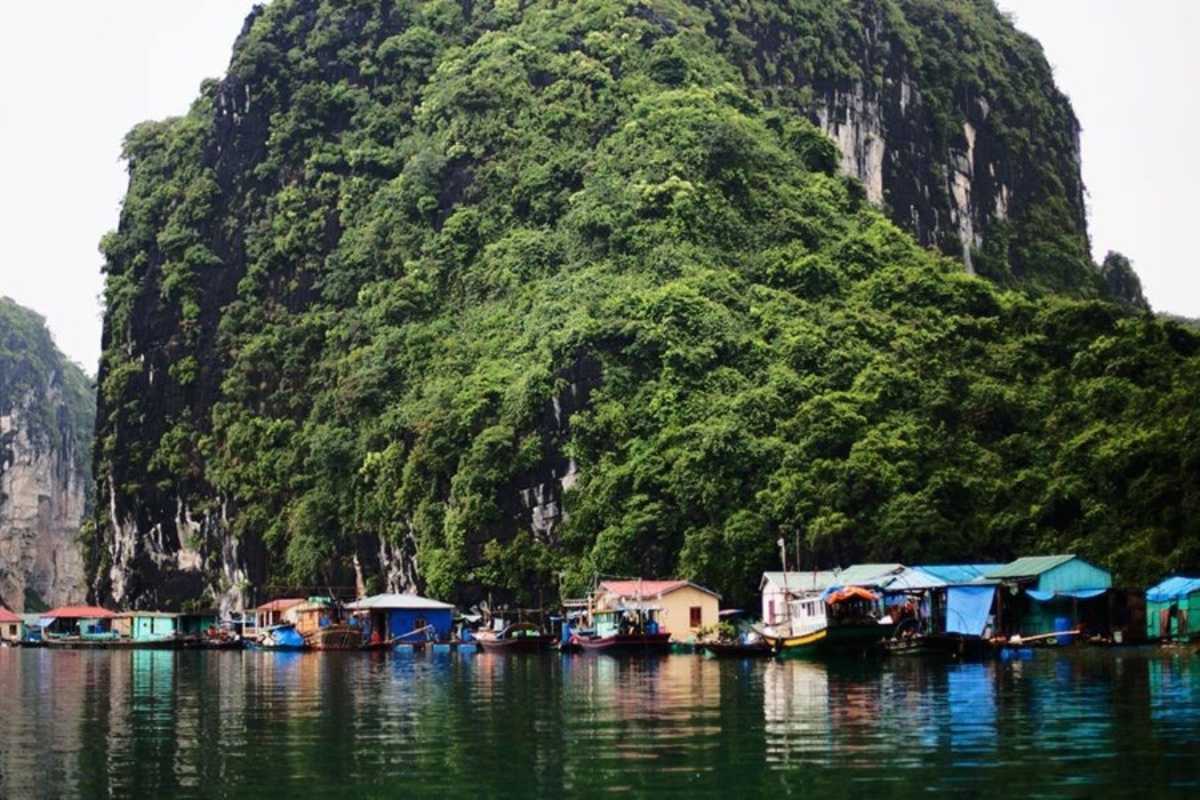
Understanding Entry Fees and Tour Costs
Visiting Cua Van Floating Village usually involves no separate entrance fee, as access is included in most boat tours around Halong Bay. Tour prices vary widely depending on the package and duration. Many tours include stops at Cua Van, kayaking, meals, and sometimes homestay accommodations, while extras like night fishing or private guides may cost more.
Budget travelers can find day tours at reasonable prices, but luxury cruises offering extended itineraries command higher fees. Planning your budget with an understanding of what’s included helps avoid surprises and ensures a smooth experience.
Knowing typical Cua Van entrance fees and tour prices allows you to choose the best option for your travel needs.
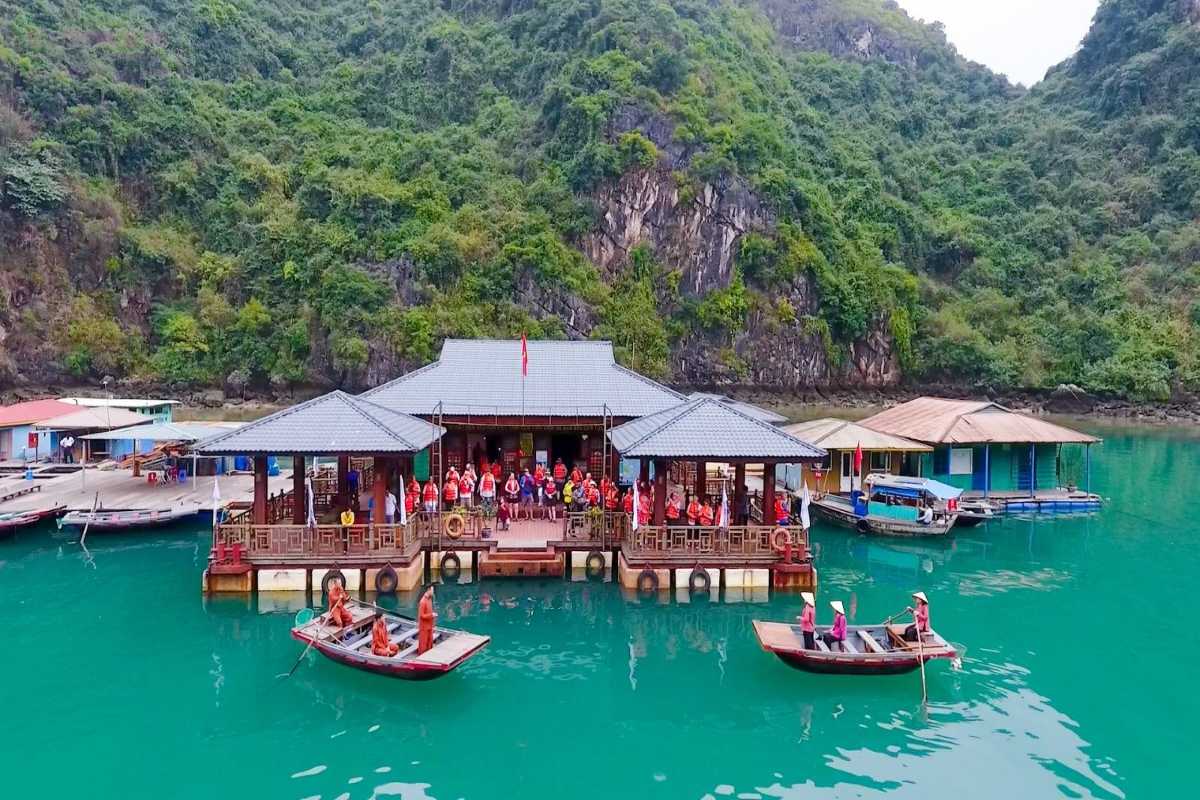
Practicalities for a Smooth Trip
When planning your visit to Cua Van Floating Village, it’s helpful to prepare for some common challenges you might face. From language barriers to limited amenities, knowing what to expect can make your trip more enjoyable and stress-free. Simple, practical tips can ease communication, ensure safety, and help you navigate the village’s unique environment.
By anticipating these concerns and learning how to address them, you can focus on immersing yourself in the beauty and culture of Cua Van with confidence.
Use these practical tips to make your visit to Cua Van as smooth and rewarding as possible.
Navigating Language and Communication
While many locals in Cua Van involved in tourism speak basic English, some language barriers may still arise. Learning a few simple Vietnamese phrases, such as greetings and expressions of thanks, can go a long way in building rapport. Translation apps can be valuable tools, especially when exploring independently or communicating specific needs.
Hiring a local tour guide offers the added benefit of seamless communication and deeper insights into village life. Being prepared for minor language challenges helps you engage respectfully and meaningfully with the community.
Prepare for your visit by familiarizing yourself with key phrases and translation tools to enhance your interactions in Cua Van and Vietnam.
Staying Connected: Phone and Internet Access
Connectivity in Cua Van Floating Village can be limited due to its remote and water-based location. Mobile network coverage is generally available but may be spotty in some areas. Purchasing a local SIM card before arriving in Halong Bay ensures better access to data and calls during your trip.
Wi-Fi is not commonly found on tour boats or floating homestays, so plan accordingly if you need reliable internet for work or communication. Understanding these connectivity realities helps manage expectations and allows for proper planning.
Stay prepared by securing local SIM cards and setting communication plans in advance when visiting Cua Van and Halong Bay.
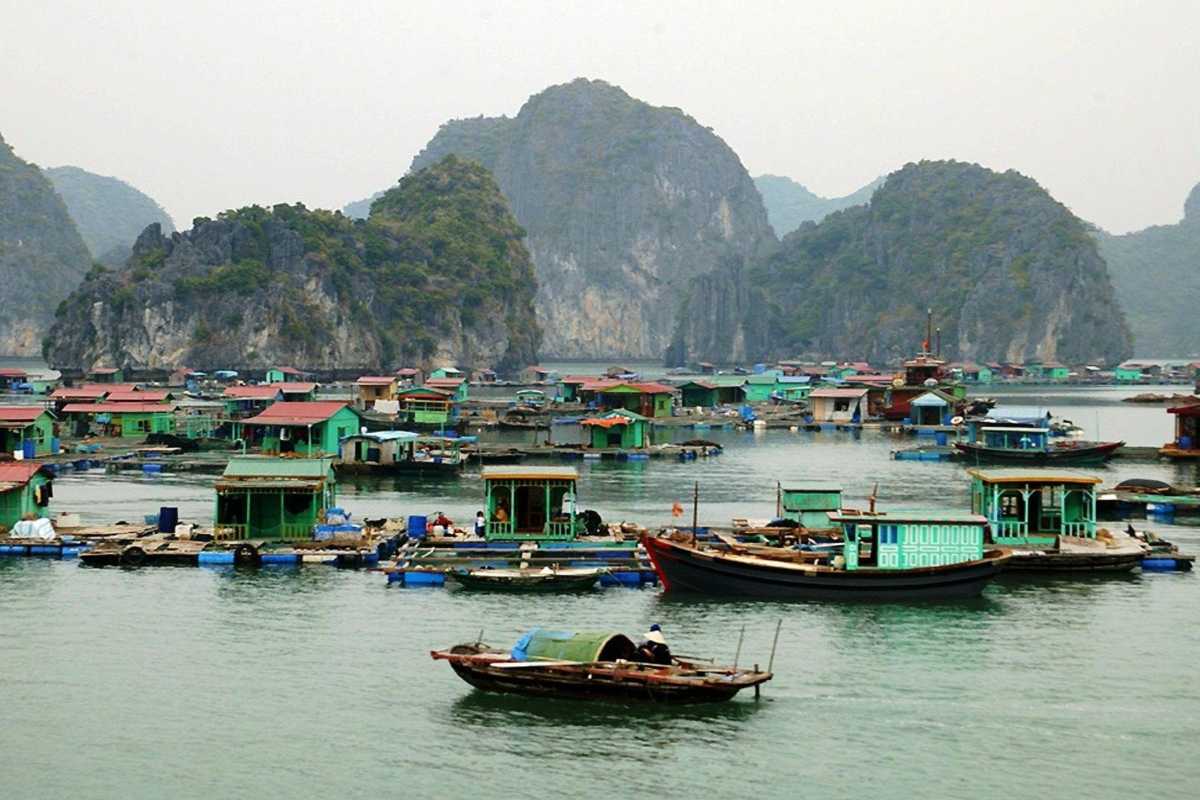
Exploring the Village and Surroundings
Exploring Cua Van Floating Village opens up a world of rich experiences framed by the stunning natural beauty of Halong Bay. From gentle boat rides through the floating neighborhood to adventurous kayaking trips, there’s a variety of ways to connect deeply with this unique environment. Whether you want to immerse yourself in local traditions, try night fishing, or enjoy a peaceful homestay, Cua Van offers activities that bring the village to life in unforgettable ways.
Plan your visit to include these vibrant activities and make the most of your time surrounded by the picturesque scenery and authentic culture of Cua Van.
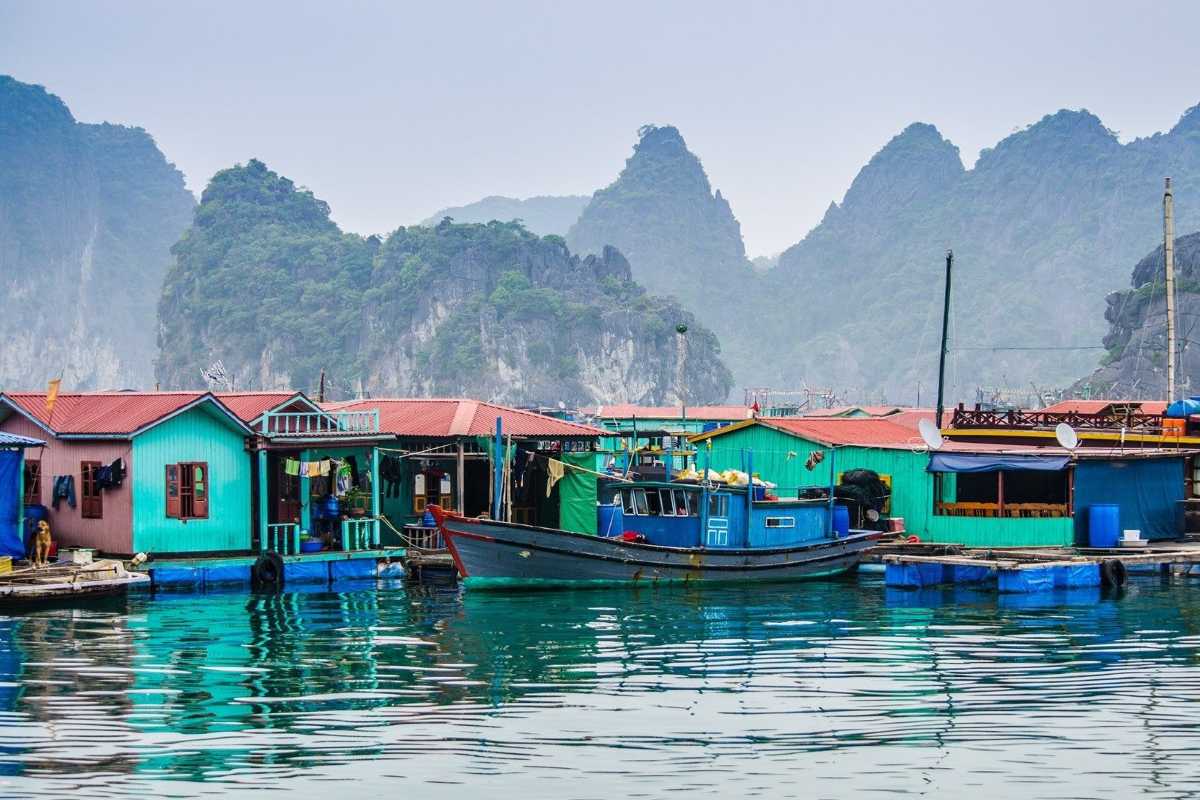
Must-Do Activities That Bring the Village to Life
The heart of your visit to Cua Van Floating Village lies in experiencing its standout activities. From cultural tours that reveal centuries-old traditions to outdoor adventures on the water, the village pulses with life and opportunity. Each activity offers a unique perspective on the daily rhythms and resilience of the community.
Whether you’re exploring on foot, by kayak, or boat, these popular experiences immerse you in the authentic spirit of Halong Bay while connecting you to the villagers’ way of life.
Incorporate these best activities into your travel plan for a truly memorable adventure in Cua Van.
Taking a Boat Tour Through the Floating Neighborhood
A boat tour through Cua Van lets you glide gently along the village’s waterways, passing colorful houses and busy fishing boats. This peaceful ride offers countless photo opportunities—from the reflections on the water to candid moments of village life. The slow pace allows time to absorb the calm and beauty around you, making it a perfect introduction to the village.
This sensory journey combines relaxation with cultural discovery, ideal for travelers wanting an easy yet immersive experience.
Consider a boat trip to explore the floating village at a leisurely pace and capture its scenic charm.
Kayaking Quiet Channels and Hidden Corners
Kayaking in Cua Van invites you to explore intimate waterways and secret spots unreachable by larger boats. The calm, sheltered channels are perfect for paddling, surrounded by dramatic limestone karsts and serene waters. Kayaking offers a personal adventure and the chance to observe wildlife and village life from a unique vantage point.
For safety, consider guided kayaking tours with experienced local guides who know the best routes and provide equipment.
Engage actively with nature and the village by paddling through Cua Van’s peaceful waters.
Joining Nighttime Squid Fishing for a Unique Experience
For the adventurous, nighttime squid fishing in Cua Van is a thrilling way to connect with local life. Equipped with traditional fishing gear and illuminated by lanterns, you’ll join fishermen as they work the waters in search of squid. The experience combines excitement, hands-on learning, and the possibility of catching your own dinner.
This cultural night activity provides a rare glimpse into the village’s livelihood after dark, filled with sounds, smells, and sights unique to this floating community.
Try squid fishing at night for a memorable, authentic experience in Halong Bay.
Staying Overnight in a Floating Homestay
Spending a night in a floating homestay offers unparalleled immersion into Cua Van’s way of life. These simple but comfortable accommodations give you the chance to share meals, stories, and daily routines with local families. Waking up on the water, surrounded by the calm bay and limestone formations, is a peaceful and memorable experience.
Basic amenities ensure comfort while cultural exchanges enrich your understanding of the community.
Book a floating homestay to deepen your connection with Cua Van and enjoy tranquil evenings on the bay.
Learning Local Crafts: Weaving and Net Mending
Visitors interested in culture can observe or even participate in traditional crafts like weaving and net mending. These skills, practiced by villagers for generations, demonstrate artistry, patience, and practicality. Workshops or informal demonstrations offer insight into the community’s craftsmanship and daily labor.
Engaging with these crafts adds a hands-on dimension to your visit, highlighting the village’s heritage and resourcefulness.
Discover local crafts in Cua Van to appreciate the skill and tradition woven into daily life.
David's Handiwork: My Attempt at Net Repair
You can read all the guidebooks in the world, look at countless photos, but nothing truly prepares you for the immersive, hands-on experience of Cua Van. Most tours simply float by, offering picturesque views. My morning, however, was about stepping into the calloused hands of a local fisherman and discovering the sheer skill and dedication that underpins life here, particularly through the deceptively simple act of mending a fishing net. This wasn't just observation; it was a personal challenge that deepened my respect for this resilient community.
The air was still cool with the lingering mist of dawn as Mr. Hoang, my host for the day, gestured for me to join him on his small, open-sided boat. The gentle lap-lap of water against the hull was the dominant sound, punctuated only by the distant cries of a few seabirds. My expectations were primarily visual – to see the floating homes, perhaps catch a glimpse of a fisherman casting a net. I certainly didn't expect to be handed a tangle of strong, dark nylon twine and a needle, alongside a section of a damaged fishing net. Mr. Hoang, a man whose face was etched with years of sun and sea, smiled kindly. "Necessary work, every day," he explained in broken English, demonstrating a precise, intricate knot. My initial feeling was a mix of apprehension and a thrilling sense of adventure – could I really do this?
He showed me how to identify a tear, how to carefully re-thread the twine, and how to tie the critical knot that would secure the patch. My first attempts were, frankly, dismal. My fingers, accustomed to keyboards and pens, felt clumsy and thick. The twine seemed to have a mind of its own, refusing to form the neat loops Mr. Hoang achieved so effortlessly. I pressed my lips together in concentration, the rough texture of the twine feeling alien against my fingertips. I focused intensely on his demonstration, watching his thumbs and forefingers dance with a rhythm born of decades of practice. The salty scent of the damp net was strong, earthy. My brow furrowed as I struggled with the tension, the tiny knots either too loose or too tight, threatening to unravel my meager progress. He patiently corrected me, his hand gently guiding mine, over and over.
The challenge was immense, but so was the insight. With each failed attempt and subsequent correction, I felt a deeper connection to the daily grind of the Cua Van villagers. This wasn't just a chore; it was a fundamental skill, a quiet act of survival and self-reliance. I realized the immense patience and dedication required to maintain these tools of their trade, the very fabric of their livelihood. When, after what felt like an eternity, I finally managed to create a few passable stitches, a genuine sense of triumph welled within me. It was a tiny patch, barely noticeable, but for me, it represented a tangible connection to their culture, a moment where I wasn't just observing, but truly participating in their enduring way of life. The quiet determination in Mr. Hoang's eyes, even when my efforts were pitiful, spoke volumes about the resilience of these people.
This experience, more than any postcard view, grounded me in the reality of Cua Van. It showed me the quiet heroism in their daily work and the profound satisfaction of truly building something with your own hands, for your own survival.
Actionable Practical Takeaways from David's Handiwork:
- Seek Hands-On Opportunities: If possible, arrange your Cua Van visit through a tour that offers a cultural exchange or a homestay. These often include chances to participate in daily activities like net mending or preparing local food.
- Be Patient with Yourself: Learning a traditional craft requires patience. Don't be discouraged if you're clumsy at first; the value is in the attempt and the understanding it brings.
- Listen and Learn: Pay close attention to the instructions and demonstrations from locals. They are the true experts.
- Engage with a Smile: Even if there's a language barrier, a genuine smile and a willingness to try convey respect and appreciation for their willingness to share their skills.
- Appreciate the Effort: Every repaired net, every prepared meal, represents immense effort and skill. Take a moment to truly appreciate the craftsmanship and dedication.
Recommendation: For travelers seeking a deeper, more authentic connection with the local culture of Cua Van, I wholeheartedly recommend finding an opportunity to engage in a hands-on activity, like attempting net repair. It’s an incredibly humbling and rewarding experience that offers unparalleled insight into the daily lives and resilience of this remarkable floating community. You won't just see Cua Van; you'll feel it in your hands and your heart.

Beyond the Horizon: Day Trips and Longer Stays Around Cua Van
While Cua Van Floating Village is a captivating destination on its own, the surrounding region offers many more wonders waiting to be explored. Extending your stay in Halong Bay opens up opportunities for enriching day trips and longer excursions that showcase the area's stunning natural and cultural landmarks. Planning your itinerary to include these nearby sights lets you experience the full magic of this UNESCO World Heritage region.
Consider combining visits to other islands, caves, and scenic spots to deepen your adventure and create unforgettable memories around Cua Van.
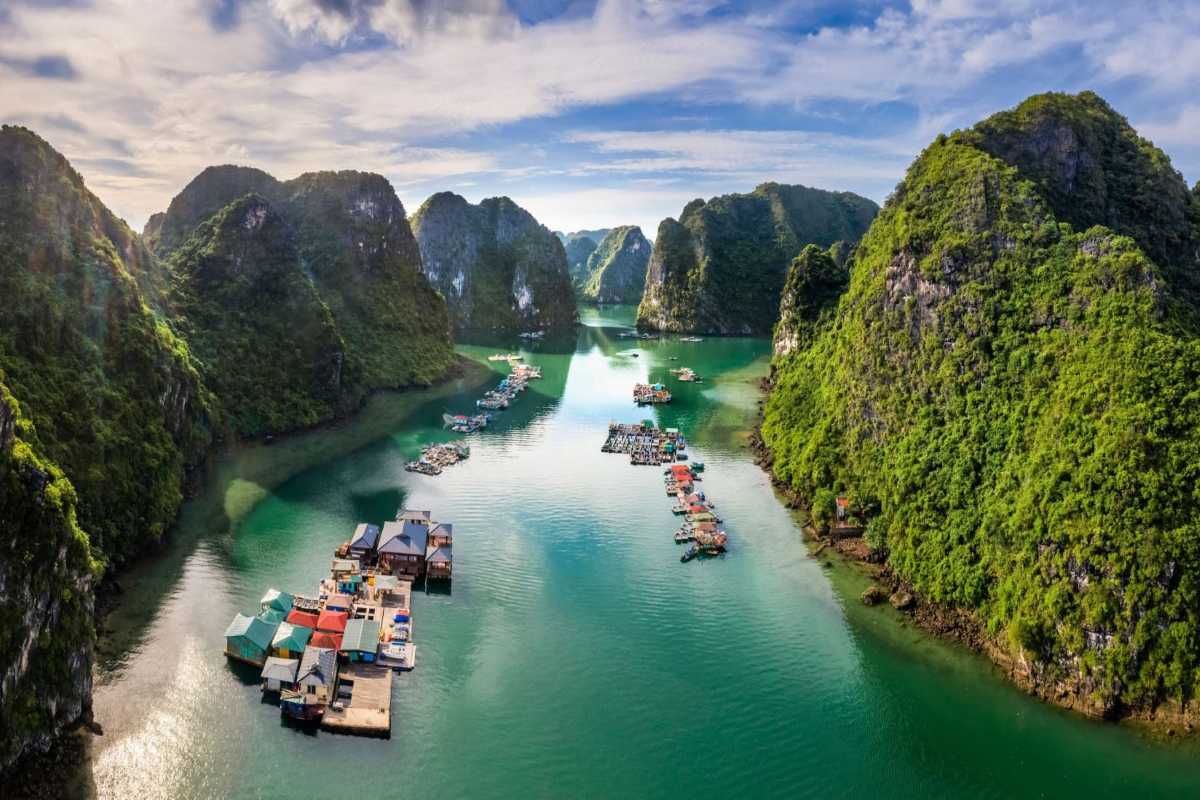
Beyond the Village: Exploring Nearby Wonders
Close to Cua Van, several attractions offer diverse experiences that require only short travel times. Notable highlights include spectacular islands with lush greenery, peaceful beaches, and vibrant marine life. These nearby spots are perfect for half-day or full-day excursions, providing a welcome change of scenery without long journeys.
Exploring these accessible attractions helps you maximize your time in Halong Bay and enriches your travel experience.
Check out these nearby gems when planning what to see near Cua Van for a well-rounded itinerary.
Connecting with Nearby Islands and Caves
Some of the most famous landmarks near Cua Van are the limestone caves and islands that define Halong Bay’s unique seascape. Sung Sot Cave (Surprise Cave) impresses with its vast chambers and intricate stalactites, while Thien Cung Cave (Heaven Palace Cave) features colorful formations that feel almost otherworldly. Picturesque islands offer serene beaches and quiet hiking trails.
These natural wonders are must-see stops that highlight the geological beauty and biodiversity of the region.
Including visits to Sung Sot Cave, Thien Cung Cave, and nearby islands will add depth and wonder to your Cua Van trip.
Combining Cua Van with a Halong Bay Cruise
Many travelers choose to experience Cua Van as part of a Halong Bay cruise itinerary. Whether you select a luxury, mid-range, or budget cruise, most multi-day tours include Cua Van as a featured stop, allowing you to explore the village alongside other key sites. These cruises often combine sightseeing, dining, and onboard comforts to offer a comprehensive journey.
Selecting the right cruise package depends on your preferences for amenities, duration, and activities. Booking through trusted operators ensures a seamless experience with Cua Van included.
Plan your Halong Bay cruise carefully to make sure visiting Cua Van Floating Village is part of your adventure.
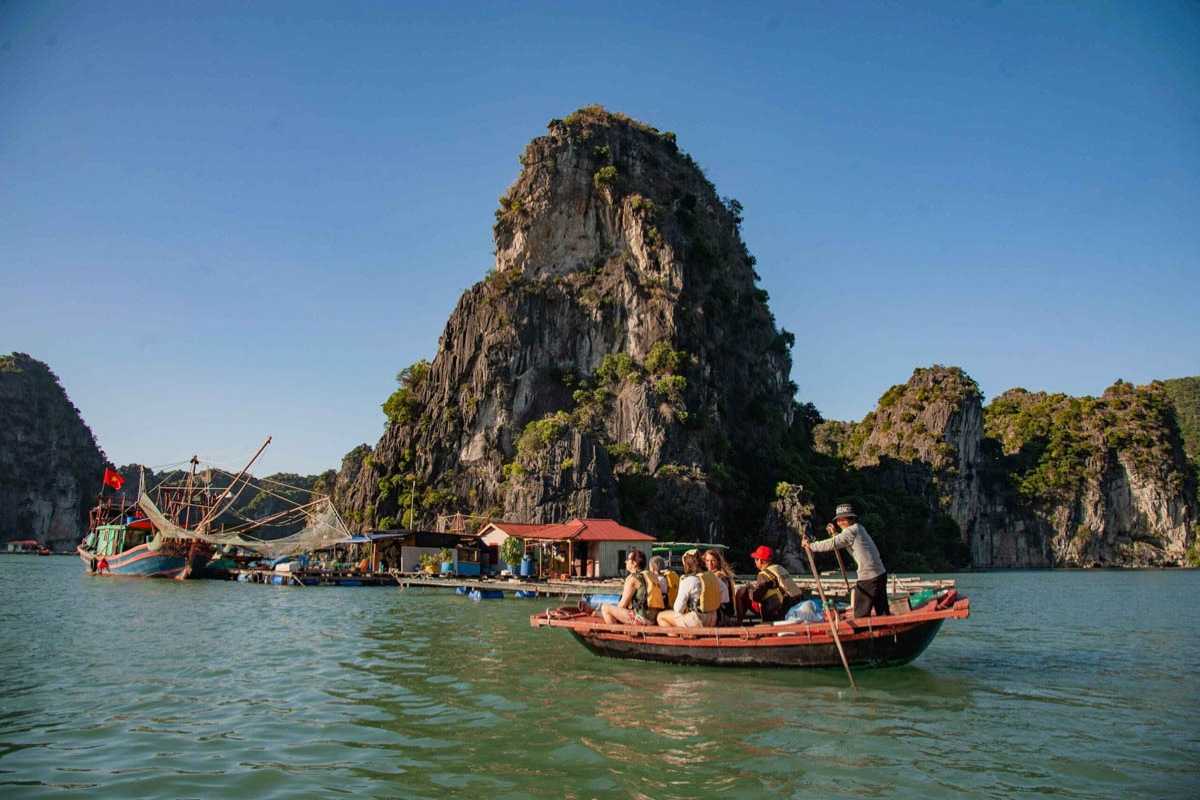
Getting the Most Out of Your Experience
To truly appreciate Cua Van Floating Village, go beyond just sightseeing. Engage with the community and environment respectfully to deepen your connection. Small, thoughtful actions can transform your visit into a meaningful cultural experience that honors local traditions and supports sustainability. Use these practical Cua Van tips to enrich your journey and make a positive impact while enjoying the unique charm of Vietnam’s maritime heritage.
Plan your visit with care to create lasting memories and meaningful interactions in Cua Van.
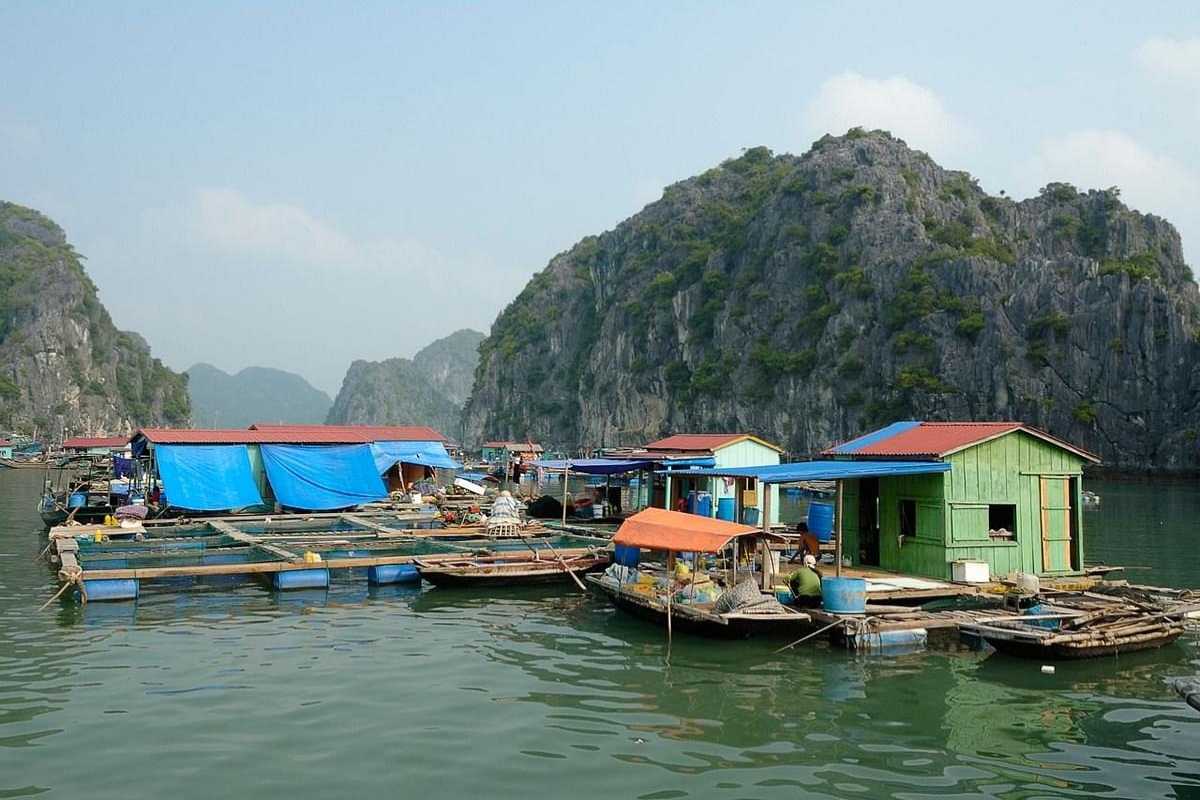
Tips to Connect with the Local Community Respectfully
Respect is key when visiting Cua Van. Always ask permission before photographing villagers to honor their privacy. Simple gestures, like smiling and greeting locals warmly, go a long way. Supporting the community by purchasing handmade crafts or fresh seafood from local vendors encourages economic sustainability and shows appreciation for their way of life. These small actions contribute to positive relationships and a respectful travel experience.
Practice respectful travel in Cua Van to foster genuine connections and honor local customs.
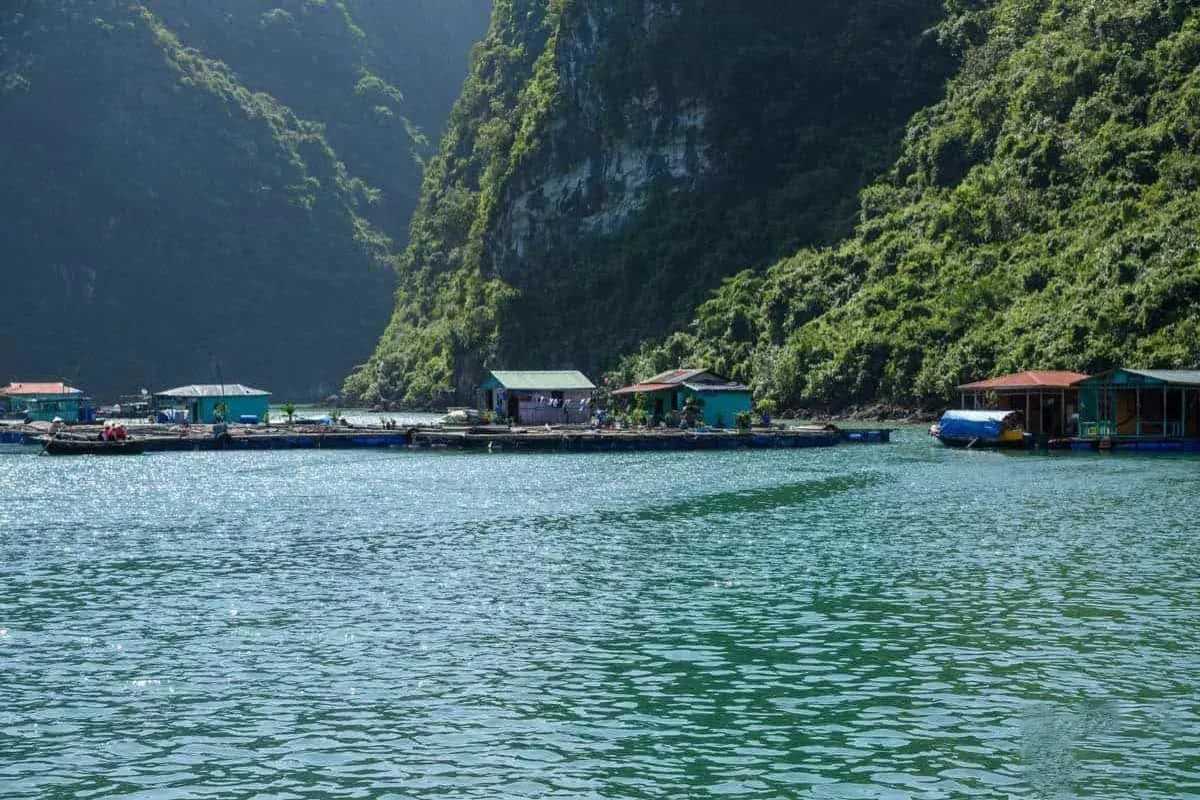
How to Capture Stunning Photos Without Disturbing Daily Life
Photography in Cua Van can be rewarding if done thoughtfully. The best light occurs during golden hour, creating beautiful reflections on the water and vibrant colors on the houses. Be discreet and avoid interrupting daily activities; candid shots often capture the village’s authentic spirit best. Respecting privacy and cultural sensitivity ensures that your photography uplifts rather than intrudes on the community.
Follow these Cua Van photography tips to balance creativity with respect.
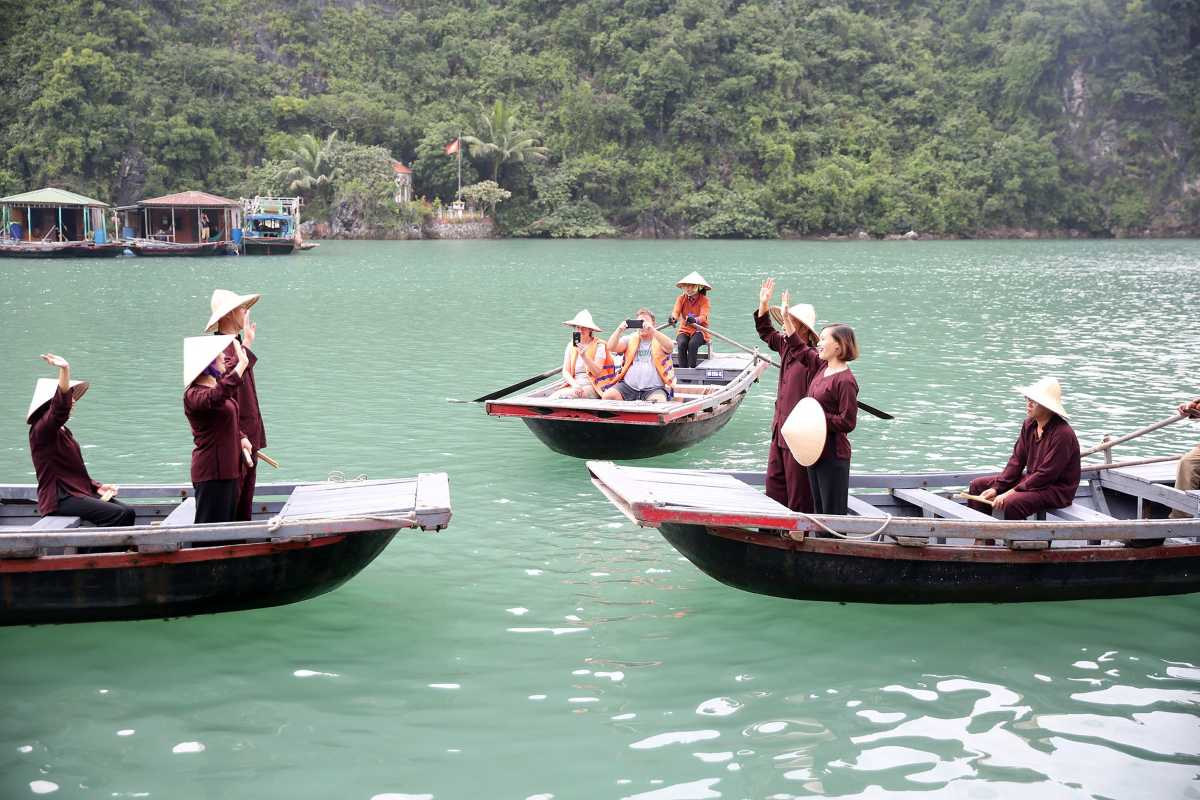
What to Eat — Tasting Fresh Seafood and Local Dishes
Cua Van offers some of the freshest seafood you’ll find in Halong Bay. Local specialties include grilled squid, steamed fish, and shellfish prepared using traditional recipes. Many homestay hosts or tour guides can recommend hidden gems where you can savor authentic flavors. Sampling these dishes enriches your cultural experience and supports village livelihoods.
Delight your taste buds with local culinary treasures during your visit to Cua Van.

Keeping It Green — How to Be a Responsible Visitor
Sustainable travel is vital in preserving Cua Van’s fragile environment. Minimize waste by reducing plastic use and disposing of trash properly. Avoid disturbing marine life or removing natural souvenirs, as these actions can harm ecosystems. Supporting local conservation efforts, when available, helps protect the village’s natural beauty for future visitors and residents alike.
Travel responsibly in Cua Van to protect its unique environment and community.
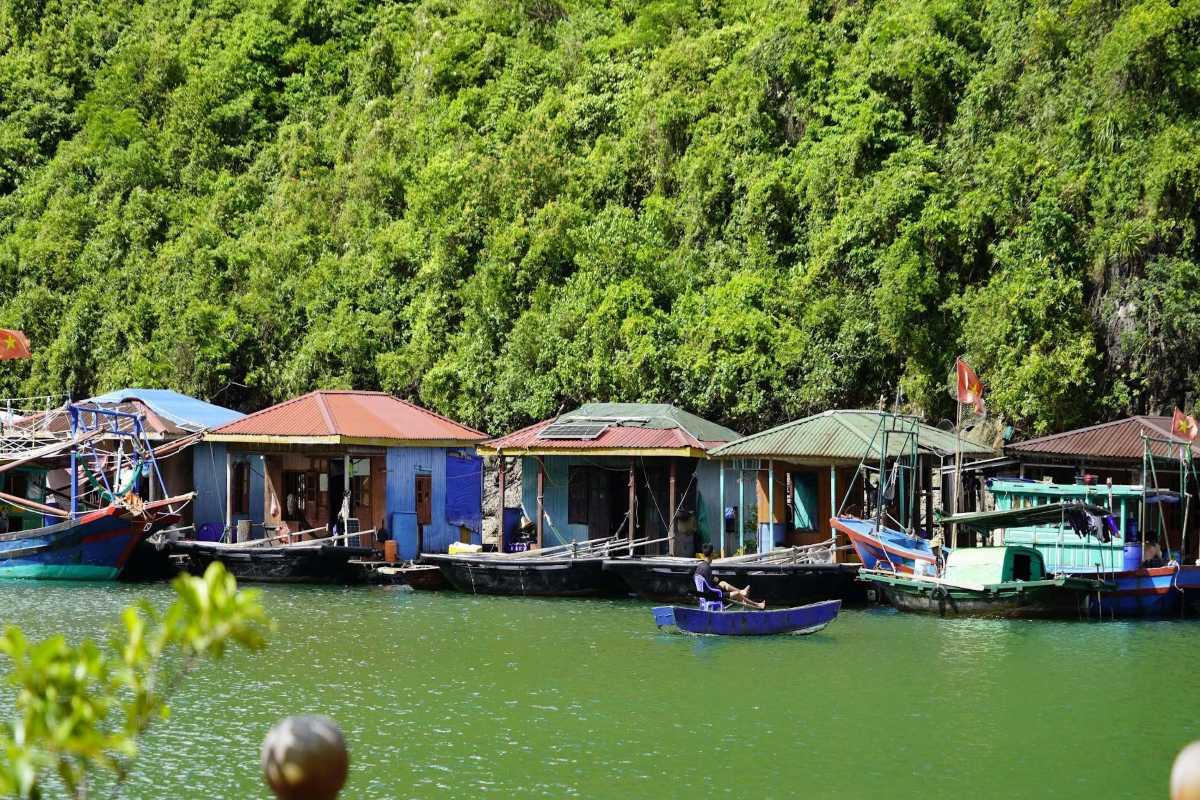
Making Your Visit Comfortable and Safe
Visiting Cua Van Floating Village offers a unique experience, but it’s important to be prepared for the practical aspects of your trip. Knowing your accommodation options, available facilities, and safety measures helps you feel confident and comfortable throughout your stay. This section provides clear guidance to ensure your visit is both enjoyable and worry-free.
Plan ahead for a safe and pleasant journey in Cua Van.
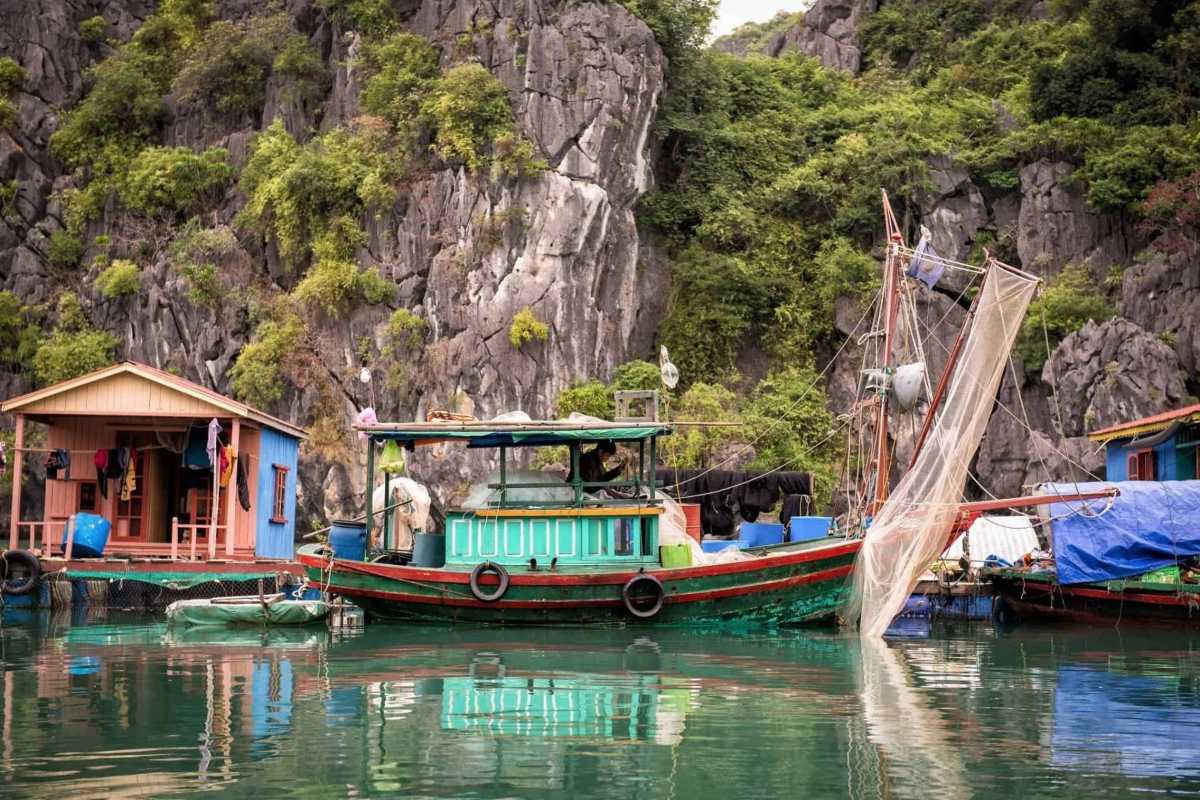
Accommodation Options: Floating Homestays and Nearby Hotels
Staying overnight in a floating homestay in Cua Van immerses you in local life, offering simple yet authentic lodging right on the water. These homestays often feature basic amenities and warm hospitality from local families. For those preferring more modern comforts, hotels on the mainland near Halong Bay provide a range of options, from budget to luxury. Booking in advance is recommended, especially during peak seasons, to secure your preferred choice.
Choose the lodging that best fits your travel style and enjoy your stay in Cua Van.

What Facilities Are Available in the Village
Facilities within Cua Van are modest but sufficient for essential needs. Small shops sell snacks and basic supplies, and there may be a community center or medical clinic for minor health concerns. Modern conveniences like large supermarkets or extensive medical services are found in nearby towns rather than in the village itself. Managing expectations helps you prepare and pack accordingly.
Be ready for the rustic charm and simplicity that make Cua Van special.
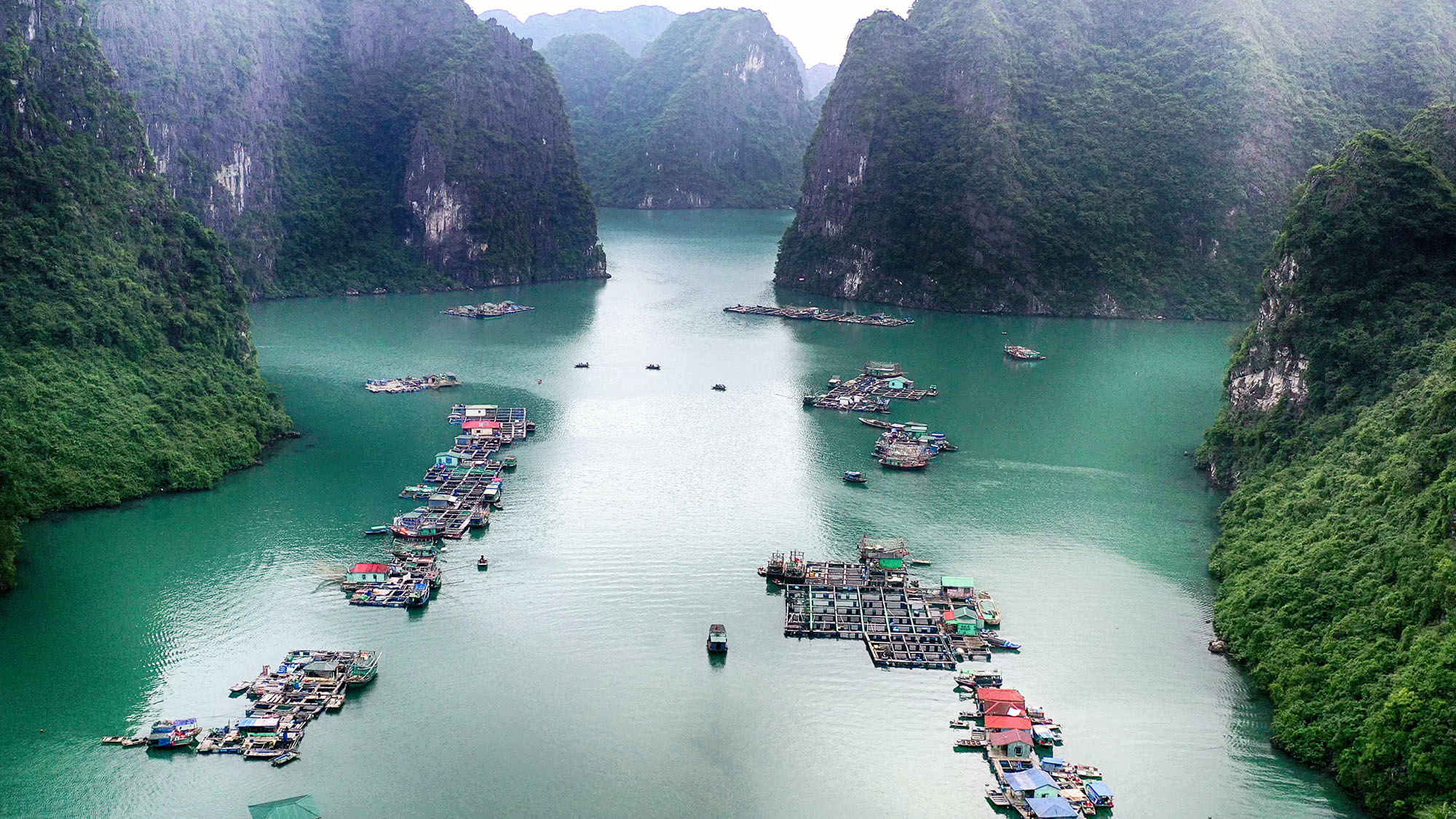
Essential Safety and Comfort Details
Ensuring your health and safety during your visit to Cua Van Floating Village is vital. This section covers key precautions and practical advice to help you stay safe and comfortable throughout your trip. From water safety to emergency preparedness, being informed empowers you to enjoy your adventure with peace of mind.
Follow these essential guidelines for a worry-free visit to Cua Van.
Staying Safe on Water — What You Need to Know
Water safety is crucial when exploring Cua Van and Halong Bay. Always wear a life jacket while on boats or kayaks, and stay alert to surrounding boat traffic. Follow all instructions from your guides, especially when navigating narrow waterways or during changing weather conditions. If swimming, choose safe areas and avoid strong currents. These precautions ensure your safety while enjoying the bay’s waters.
Stay vigilant and prioritize water safety for an enjoyable experience in Cua Van.
Dealing with Motion Sickness: Tips for Water Travel
Boat travel in Halong Bay can cause motion sickness for some visitors. To prevent discomfort, consider taking medication before boarding. Focus your gaze on the horizon to help your balance, and avoid heavy meals before the trip. Natural remedies like ginger or peppermint can also ease nausea. Being prepared lets you enjoy your journey without interruption.
Use these practical tips to manage motion sickness when traveling to Cua Van.
Health and Emergencies: What to Do if You Need Help
In case of emergencies during your visit to Cua Van, knowing how to get assistance is vital. Carry travel insurance that covers health issues and accidents. Bring a basic first aid kit for minor injuries or ailments. Tour guides are trained to respond to emergencies and can help coordinate medical care if needed. Familiarize yourself with local emergency contacts before your trip.
Being prepared for health and safety challenges ensures a safer visit to Cua Van.

Accessibility Considerations for Different Travelers
Visiting Cua Van Floating Village can present unique challenges for travelers with mobility issues. Boarding boats and moving across floating structures require balance and care, which may be difficult for some. Families with young children should prepare for limited safety barriers and uneven surfaces, while elderly visitors might find the environment physically demanding. Planning ahead and seeking assistance when needed helps ensure a smooth, enjoyable visit for everyone.
Prepare for your trip with these tips to make your visit to Cua Van comfortable and safe for all ages.

Before You Go — Insider Advice from Fellow Travelers
Planning a trip to Cua Van Floating Village can raise many questions. This section gathers common traveler concerns and practical advice from those who have been there. Presented in an easy-to-scan FAQ style, it offers trustworthy answers and helpful tips to prepare you for a smooth and memorable visit. Drawing on real experiences builds confidence and readiness before you embark on your journey.
Gain valuable insights and get ready to explore Cua Van with confidence.

Real Stories from Fellow Travelers
Hearing personal stories from others who’ve experienced Cua Van brings the village to life in a unique way. These narratives share diverse perspectives, highlighting both joyful moments and challenges faced on the water. Such firsthand accounts help you picture your own adventure, learn what to expect, and discover tips to enrich your experience.
Let these authentic traveler reflections inspire your visit to Cua Van Floating Village.
Maya's Unexpected Calm: Finding Peace on the Water
Having just emerged from the exhilarating, yet undeniably chaotic, bustle of Hanoi, my mind was still buzzing. My expectation for Halong Bay was grand scenery, certainly, but I braced myself for more crowds, more noise – another beautiful but busy tourist spot. Cua Van Floating Village, however, unveiled a profound surprise: an unexpected, almost spiritual, calm that settled over me the moment my small boat drifted into its watery embrace. This wasn't just a scenic detour; it was a deeply personal escape, a serene counterpoint to the rush of city life.
The transition was immediate and palpable. As our transfer boat left the main cruise lanes, the distant rumble of larger vessels faded. Soon, the only sound was the gentle, rhythmic dip of the oar as my guide, a quiet woman named Linh, paddled us towards the heart of the village. The air, initially filled with the general hum of the bay, suddenly became crisp, clean, and infused with the faint, earthy scent of salt and damp wood. My shoulders, which I hadn't realized were so tense, visibly relaxed. Instead of grand landmarks, what greeted me was a collection of humble, colorful floating homes, each one a testament to lives lived in harmony with the sea. I felt an immediate sense of peaceful wonder; this was entirely different from any travel experience I'd had before.
We drifted slowly through the "streets" of the village. There was no traffic, no blaring horns, just the softest lapping of water against boat hulls and the occasional, distant chatter of children's voices playing near a floating school. I watched a woman expertly mending a fishing net, her movements fluid and unhurried. Another silently cast a line from her doorway. The vibrant blues and greens of the houses, the deep emerald of the water, and the majestic, ancient grey of the limestone karsts created a living painting. I found myself simply breathing, deeply and slowly, feeling the gentle rocking sensation beneath me. It was profoundly calming, almost meditative. The anxiety of city life, the constant need to be "on," simply melted away. I wasn't thinking about emails or deadlines; I was fully present, observing the quiet dignity of a life lived entirely on water. There was a unique kind of beauty in this simplicity, an absence of manufactured distraction that allowed true tranquility to surface. My typical travel mode is to rush, to see everything, but here, the greatest joy was in doing almost nothing at all, just being.
My biggest insight from Cua Van was that true escape isn't always about grand adventures; sometimes, it's about finding a pocket of profound peace where time slows down, and the rhythm of nature gently takes over your own. It taught me the unexpected power of stillness and how deeply restorative it can be.
Actionable Practical Takeaways from Maya's Calm:
- Choose a Smaller Boat/Tour: Opt for a sampan or a smaller, local tour boat for a more intimate and quiet experience within the village. Large cruise ships won't offer this level of immersion.
- Embrace the Silence: Resist the urge to fill every moment with photos or chatter. Allow yourself to simply observe, listen, and feel the unique atmosphere.
- Visit in the Off-Peak Hours: Early morning or late afternoon visits can offer more solitude and fewer other visitors, enhancing the peaceful feeling.
- Dress Comfortably: Wear light, breathable clothing suitable for being on the water. Simplicity matches the village's ambiance.
- Bring a Journal: If you enjoy reflection, a small notebook can be a wonderful companion to capture your thoughts and feelings in this serene setting.
Recommendation: If your soul craves a genuine escape, a place where the world's noise fades into the gentle lapping of waves, then Cua Van Floating Village is your haven. Allow yourself to be truly present here; you'll discover an unexpected calm that is both deeply moving and incredibly restorative. It’s an essential experience for anyone seeking peace amidst the stunning beauty of Halong Bay.
The Miller Family's Adventure: Kayaking with Kids
"Are we going on a pirate ship, Dad?" our youngest, Leo (6), piped up, eyes wide, as our small boat approached Cua Van Floating Village. Traveling through Halong Bay with two energetic kids (our eldest, Mia, is 9) can be a tightrope walk between awe-inspiring scenery and the inevitable "I'm bored!" But Cua Van, with its promise of kayaking through a real floating village, felt like it held the key to unlocking a truly memorable, and crucially, engaging, family adventure. Our goal was not just to see it, but to do it, together.
The initial feeling was a mix of anticipation and the usual parental anxiety: "Will they be safe? Will they enjoy it? Will I end up doing all the paddling?" As we transferred to the smaller, more agile sampan that would take us right into the village, the kids were already buzzing. The first sight of the colorful floating homes, bobbing gently on the emerald water, drew gasps of delight. "Look, a house on the water!" Mia exclaimed, pointing excitedly. Our guide, a calm and friendly woman named Hoa, immediately put us at ease, patiently answering Leo's rapid-fire questions about how people lived here. The gentle rocking of the boat was surprisingly soothing, and the air, fresh and clean, was a welcome change from city fumes.
The real test, and the highlight, was the kayaking. After a brief safety talk and ensuring everyone had snugly fitting life jackets – non-negotiable for us – we climbed into our two-person kayaks. Mia, ever the adventurous one, was keen to paddle with me, while my husband took Leo. The initial few minutes were a bit wobbly, with some excited shouts and splashes, but soon, we found our rhythm. The beauty of Cua Van for kayaking with kids is the incredibly calm, sheltered waters. We paddled through narrow channels between floating houses, getting an intimate glimpse into daily life. We saw children playing on their verandas, dogs dozing on boat decks, and men mending fishing nets – each sight sparking a new round of "Look, Dad! Look, Mom!" The slight splash of our paddles was the loudest sound, aside from the kids' excited whispers.
There were unexpected joys: Mia, usually glued to her tablet, became a diligent explorer, pointing out tiny schools of fish beneath our kayak. Leo, who often complains about walking, paddled with surprising enthusiasm, convinced he was steering a "secret pirate ship" through hidden coves. We encountered a small, floating store, and Hoa helped us buy some refreshing coconut water directly from the vendor – a simple transaction that felt incredibly authentic. The biggest challenge was keeping Leo from trying to touch everything, but Hoa's gentle redirection and constant reassurance made it manageable. We learned that the key was to embrace the slower pace, allow for curiosity, and let the unique environment be the entertainment. The children were completely engrossed, far more than they ever are with a museum or a typical sightseeing bus. It was messy, it was a little loud at times, but it was gloriously, genuinely fun.
Our Cua Van kayaking adventure wasn't just another item checked off a list; it was a vibrant, interactive memory for our family. It taught us that sometimes the most memorable travel moments happen when you ditch the rigid itinerary and simply embrace the unique, hands-on opportunities a place offers.
Actionable Practical Takeaways from The Miller Family's Adventure:
- Life Jackets are Non-Negotiable: Ensure children have properly fitted life jackets provided by the tour operator. Check them before you start.
- Opt for Tandem Kayaks: Having an adult in each kayak with a child provides control and allows you to share the paddling, making it less tiring for little ones.
- Manage Expectations (Yours & Theirs): It won't be a perfectly quiet, serene paddle. Kids will splash, ask questions, and get excited. Embrace the chaos!
- Bring Snacks & Water: Even short paddles can make kids hungry. Pack easy-to-eat snacks and plenty of water in waterproof bags.
- Waterproof Everything: Phones, cameras, and anything else you don't want soaked should be in dry bags. Splashes are inevitable.
- Engage a Local Guide: A good local guide (like Hoa) is invaluable. They can bridge language barriers, point out interesting details, and help manage kids' curiosity safely.
- Allow for Exploration: Let the kids lead some of the discovery, pointing out what catches their eye. It makes the experience more personal for them.
Recommendation: If you're a family traveling with children and looking for an unforgettable, active, and genuinely authentic experience in Halong Bay, don't hesitate to include kayaking through Cua Van Floating Village. It's more than just a paddle; it's an immersive journey that will spark their imaginations, burn off some energy, and create lasting memories that go far beyond a typical sightseeing tour.
What Sarah Wished She Knew Before Her Trip
My trip to Cua Van Floating Village was, without a doubt, a highlight of my Halong Bay adventure. It was beautiful, authentic, and truly special. However, like any travel experience, there were a few "aha!" moments – little things I wished I’d known before I went that would have made the trip even smoother. Consider this my candid, insider advice, learned the hard way, so your visit can be as perfect as possible!
My biggest initial feeling about Cua Van was one of romanticized awe from pictures. I expected pristine tranquility at every turn. While it is incredibly peaceful, my first "wish I knew" moment happened during the transfer. I'd booked a tour that said it included "floating village visit," assuming it meant direct, seamless access. What I quickly learned was that many tours merely sail past the village, or offer a very brief, distant glimpse. If true immersion is what you're after, you need to be very specific. My first thought was, "Oh no, did I choose the wrong one?" I felt a pang of disappointment, realizing my expectation of deep engagement might be cut short.
Here’s what I truly wish I'd known – and what I'll do differently next time, and what you should consider:
- Be Ruthless with Tour Itineraries: Don't just read "Cua Van Floating Village." Look for specifics: "kayaking inside the village," "overnight homestay with a local family," or "sampan ride through the residential areas." If it just says "visit" or "pass by," it likely means a distant view. My initial disappointment eased when my guide, sensing my desire for more, managed to arrange a short, private sampan tour for me once we arrived, but it was an unplanned scramble. If you want genuine interaction, verify it explicitly in your booking.
- Embrace the Basic Amenities (and Pack Accordingly): I packed as if I was on a mid-range cruise – a nice outfit for dinner, a few more tech gadgets. Once in the village, I quickly realized the beauty is in its simplicity. Power might be limited, Wi-Fi almost non-existent in homestays, and facilities are, understandably, basic. I wished I'd packed even lighter, with more focus on quick-drying clothes and fewer "just in case" items. A small, waterproof bag for essentials (phone, cash, sunblock) is a lifesaver, as you'll be getting in and out of smaller boats. The salty spray on my phone made me nervous more than once!
- Bring Cash, Small Denominations: While some larger tours might cover everything, if you want to buy a small, handmade souvenir from a local, or grab a refreshing drink from a passing vendor (which I highly recommend for the experience!), cash is king. And specifically, smaller denominations of Vietnamese Dong. No one wants to break a 500,000 VND note for a 20,000 VND coconut. I felt a bit awkward rummaging for change the first time.
- The Quiet is the Point: Lean into It: My city brain initially sought constant stimulation. But Cua Van's true magic lies in its tranquility. The gentle creak of wood, the soft lapping of water, the distant calls of vendors – these are the soundscape. Resist the urge to constantly check your phone or fill every silence. I found myself simply sitting, watching the subtle currents, and that's when the true sense of peace really settled in. My emotional response shifted from "needing to do something" to "just being," and that was incredibly freeing.
Ultimately, Cua Van delivered an unforgettable experience. My minor missteps simply highlighted how crucial it is to manage your expectations and prepare for an authentic, off-the-beaten-path adventure. It’s a place that teaches you to slow down and appreciate a different way of life.
Actionable Practical Takeaways from Sarah's Trip:
- Verify Tour Details: Before booking, confirm explicitly if your tour allows inside the village for activities like kayaking, sampan rides, or homestays, rather than just sailing by.
- Pack Light & Smart: Prioritize quick-dry clothing, swimwear, sun protection (hat, sunglasses, reef-safe sunscreen), insect repellent, and a reliable waterproof bag for electronics.
- Carry Small Bills: Have plenty of small Vietnamese Dong denominations for purchasing local snacks or souvenirs directly from villagers.
- Embrace Disconnection: Be prepared for limited or no Wi-Fi/phone signal. Use it as an opportunity to truly disconnect and immerse yourself.
- Stay Hydrated: The sun can be intense. Always carry your own reusable water bottle.
Recommendation: Don't let minor planning oversights diminish your Cua Van experience! Learn from my lessons: meticulously vet your tour, pack for simplicity, and bring cash. Armed with these insider tips, you'll be perfectly prepared to fully embrace the authentic charm and profound tranquility of Cua Van Floating Village – an experience you genuinely won't want to miss.

Why You’ll Love Cua Van Floating Village!
There’s something truly special about Cua Van Floating Village that stays with you long after you leave. This vibrant community, nestled in the breathtaking seascape of Halong Bay, offers a rare glimpse into a way of life shaped by the water. You’ll find a peaceful escape where authentic interactions and cultural immersion come naturally, making every moment memorable and meaningful.
Plan your visit to Cua Van and discover a unique destination that captures the heart of Vietnam’s maritime heritage.

The Magic of Living Culture on Water
Witnessing a living community thrive on water is a captivating experience unique to Cua Van. Here, culture isn’t something preserved behind glass; it’s alive in every boat, every crafted net, and every smile. You’ll be immersed in traditions passed down through generations, surrounded by the rhythm of daily life shaped by nature’s flow.
This authentic living experience in Halong Bay invites you to connect deeply with a traditional lifestyle few places can offer.

A Peaceful Escape with Authentic Experiences
Far from the crowded tourist hubs, Cua Van offers a serene retreat where you can savor quiet moments and genuine human connections. The village’s tranquil atmosphere and unspoiled surroundings provide the perfect backdrop for a peaceful escape, allowing you to experience the cultural authenticity of Vietnam in a relaxed, unhurried way.
Choosing Cua Van means embracing the calm and authenticity that define this remarkable corner of Halong Bay.

Your Next Memorable Adventure Awaits Here
Now is the perfect time to make your plans and explore everything Cua Van Floating Village has to offer. Whether you’re drawn by its unique culture, stunning natural beauty, or peaceful charm, this destination promises an adventure unlike any other. Take the next step in your travel journey and start planning your visit today.
Discover more about tours and travel options to Cua Van with trusted guides and make your dream trip a reality.
Mike Nguyen
Travel Advisor
Mobile: +84917506881 (whatsapp available)
Email: contact@asiatravellinks.com
Faqs
Cua Van Floating Village is a unique community located in Halong Bay, Vietnam, where residents live on wooden houses built directly on the water. It is one of the largest and most authentic floating fishing villages in the region, showcasing a traditional lifestyle closely tied to the sea.
This living village offers visitors a chance to experience Vietnamese maritime culture firsthand. The houses, fishing boats, and daily activities form a picturesque scene framed by the stunning limestone karsts of Halong Bay.
- The village is inhabited by families engaged in fishing and aquaculture.
- It functions as a genuine community, not just a tourist attraction.
- Visitors can observe daily life and learn about traditional floating village practices.
Discover the charm and cultural richness of Cua Van Floating Village by planning your visit today.
To reach Cua Van Floating Village from Halong City, most visitors take boat tours departing from key piers such as Tuan Chau Pier or the Halong City Tourist Wharf. Travel options include motorboats, traditional junk boats, and organized cruises.
The journey typically takes between 30 to 60 minutes depending on the boat type and route. Visitors can choose between group tours or private transfers.
- Group tours often include multiple stops around Halong Bay, with Cua Van as a highlight.
- Private transfers offer more flexible schedules and personalized experiences.
- Booking through reputable local operators ensures a safe and smooth trip.
Plan your route carefully to enjoy a comfortable and scenic ride to Cua Van Floating Village.
There is generally no separate entry fee to visit Cua Van Floating Village itself. However, most visitors access the village as part of a Halong Bay boat tour, which includes the cost of transportation and activities.
Some tours may offer additional experiences like kayaking or homestays that come with extra charges.
- Confirm inclusions and fees when booking your tour or transfer.
- Some homestays may request a small community contribution.
- Budget for optional activities like fishing trips or craft workshops.
Understanding the costs upfront will help you plan a worry-free visit to Cua Van Floating Village.
The best time to visit Cua Van Floating Village is during the dry season from October to April, when the weather is cooler and rainfall is minimal. During this period, the waters of Halong Bay are calmer, making boat rides and outdoor activities more enjoyable.
Avoid the hot, humid summer months (May to September) when monsoon rains and storms are more common.
- October to April offers pleasant temperatures and clearer skies.
- Early mornings and late afternoons provide tranquil moments and softer light.
- Tourist crowds peak in December and February; visiting off-peak can offer a quieter experience.
Choose your timing wisely to experience the village at its best.



